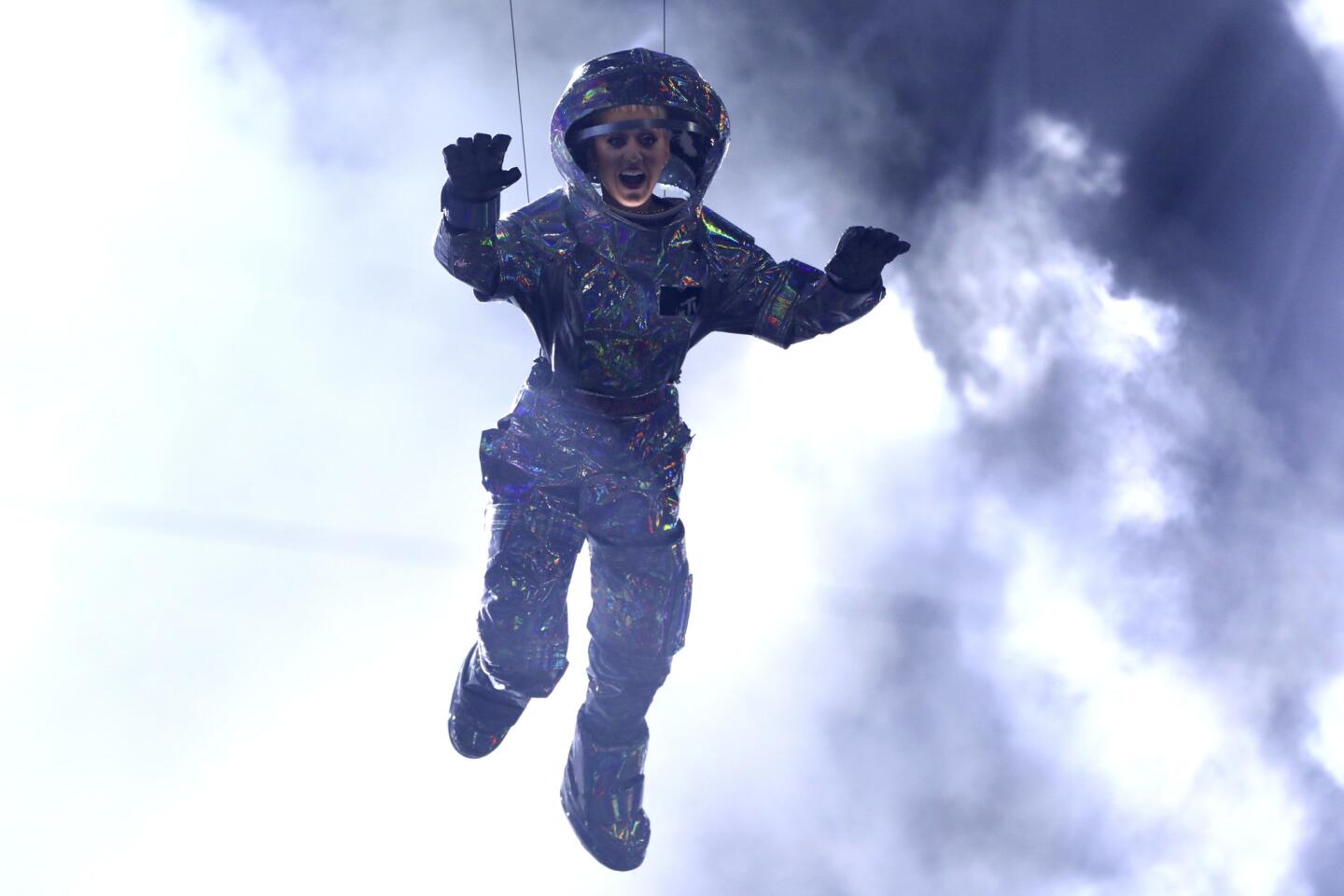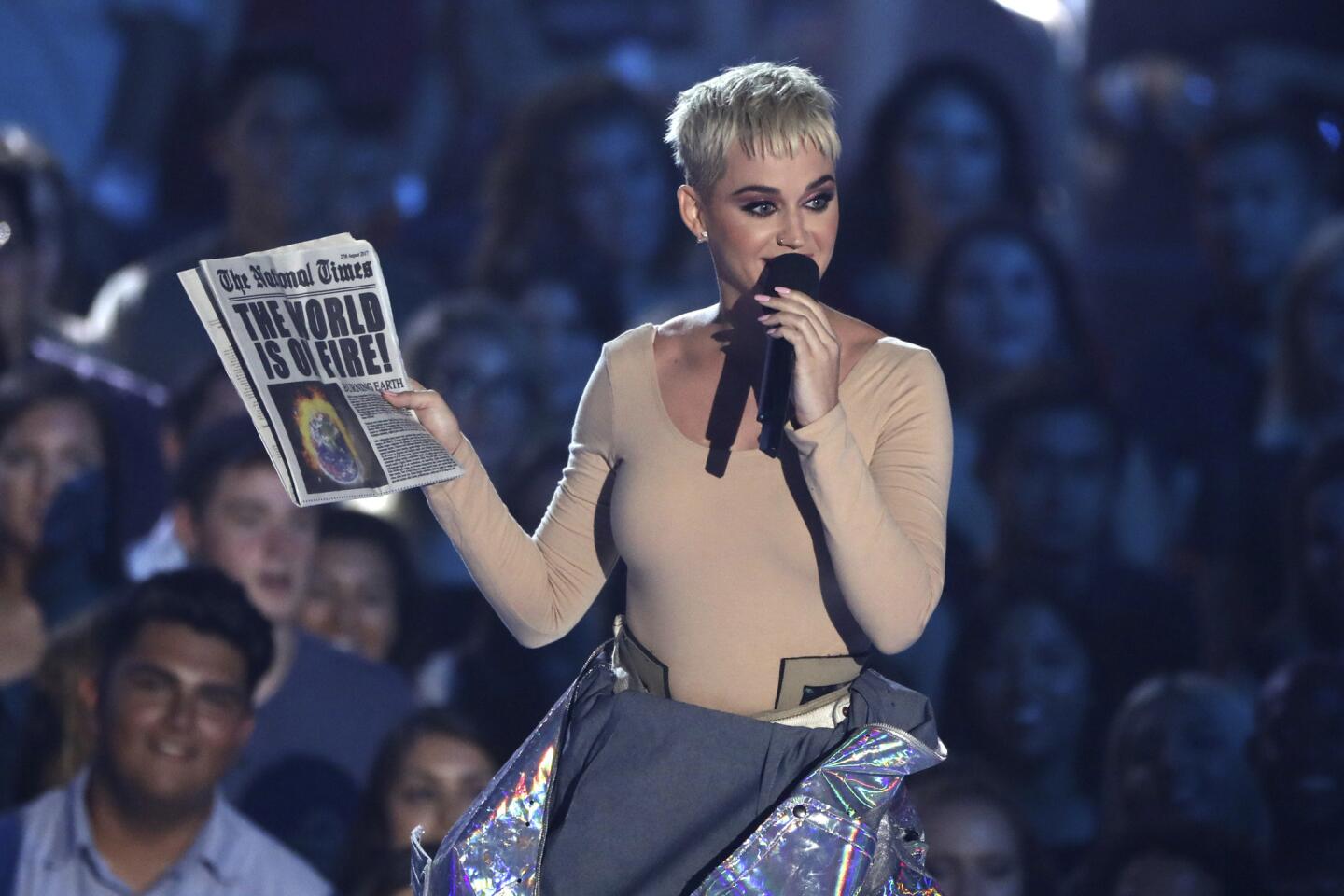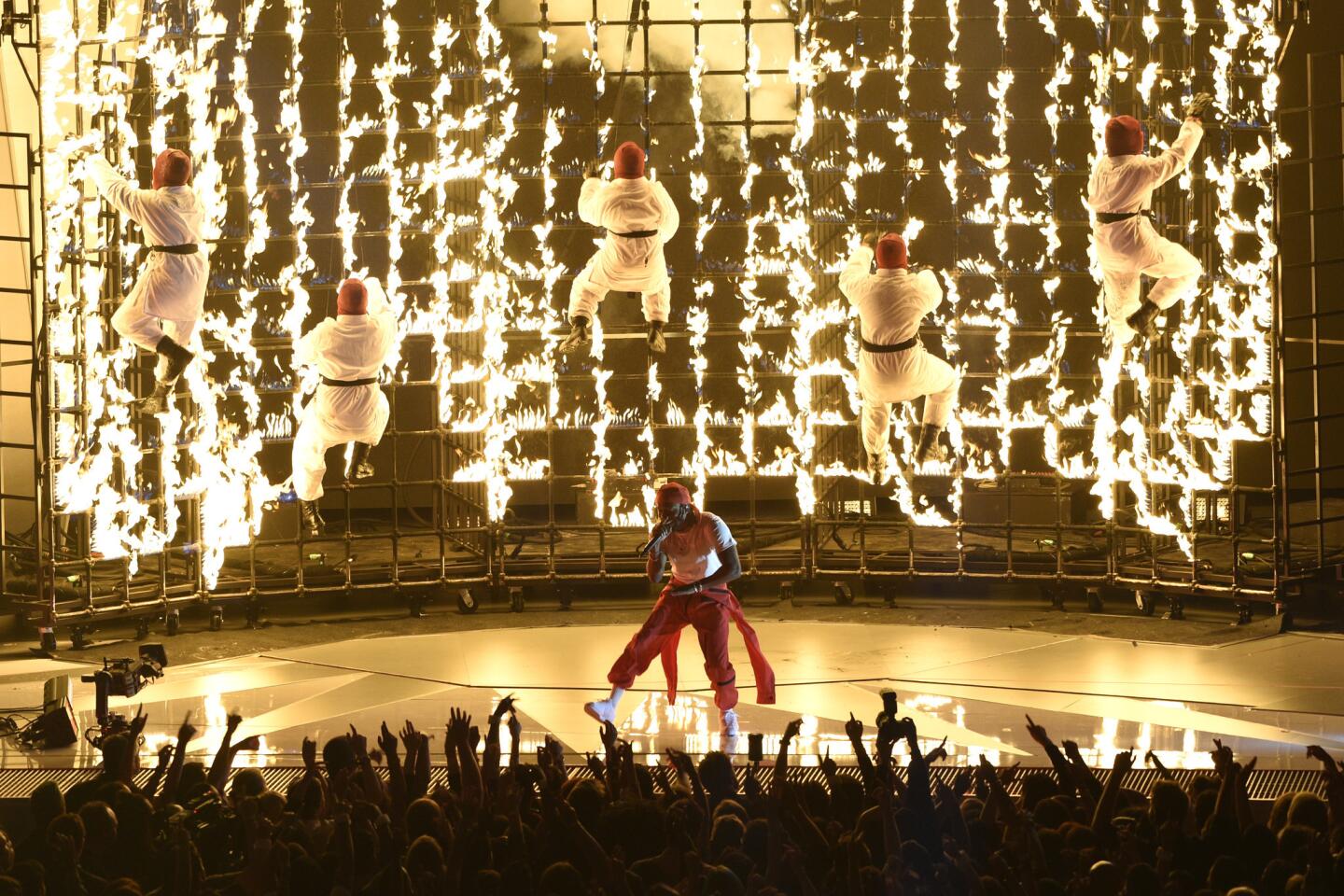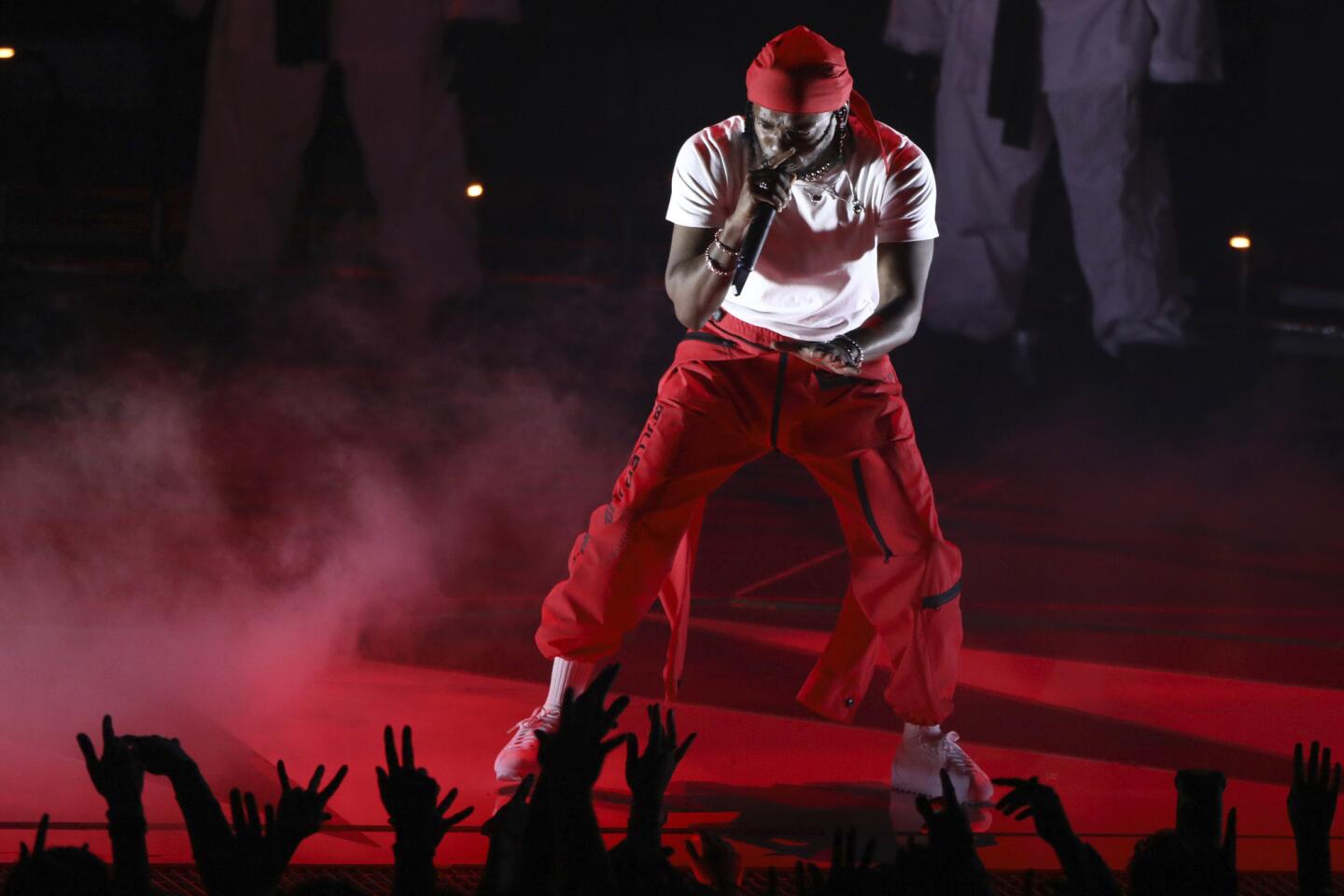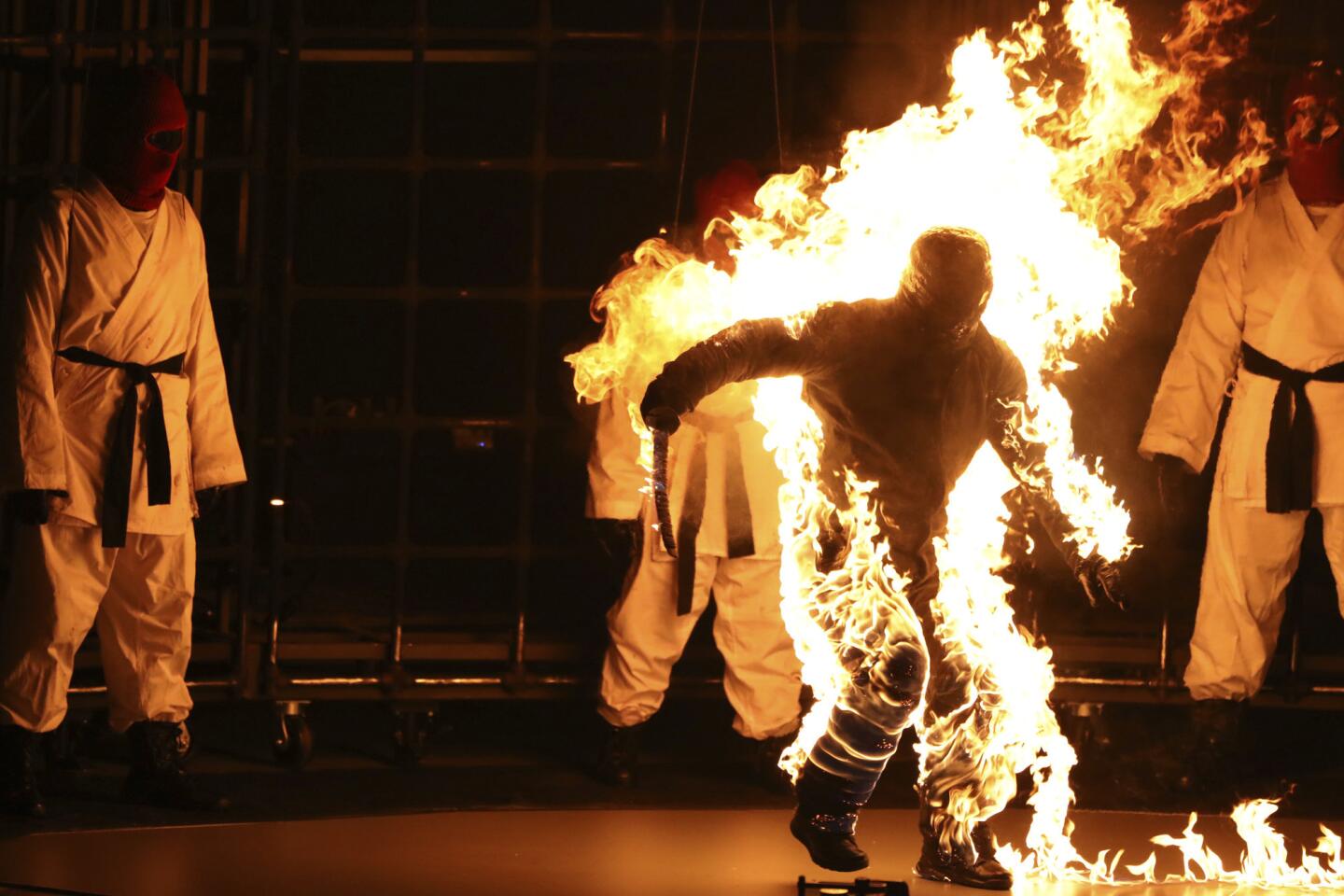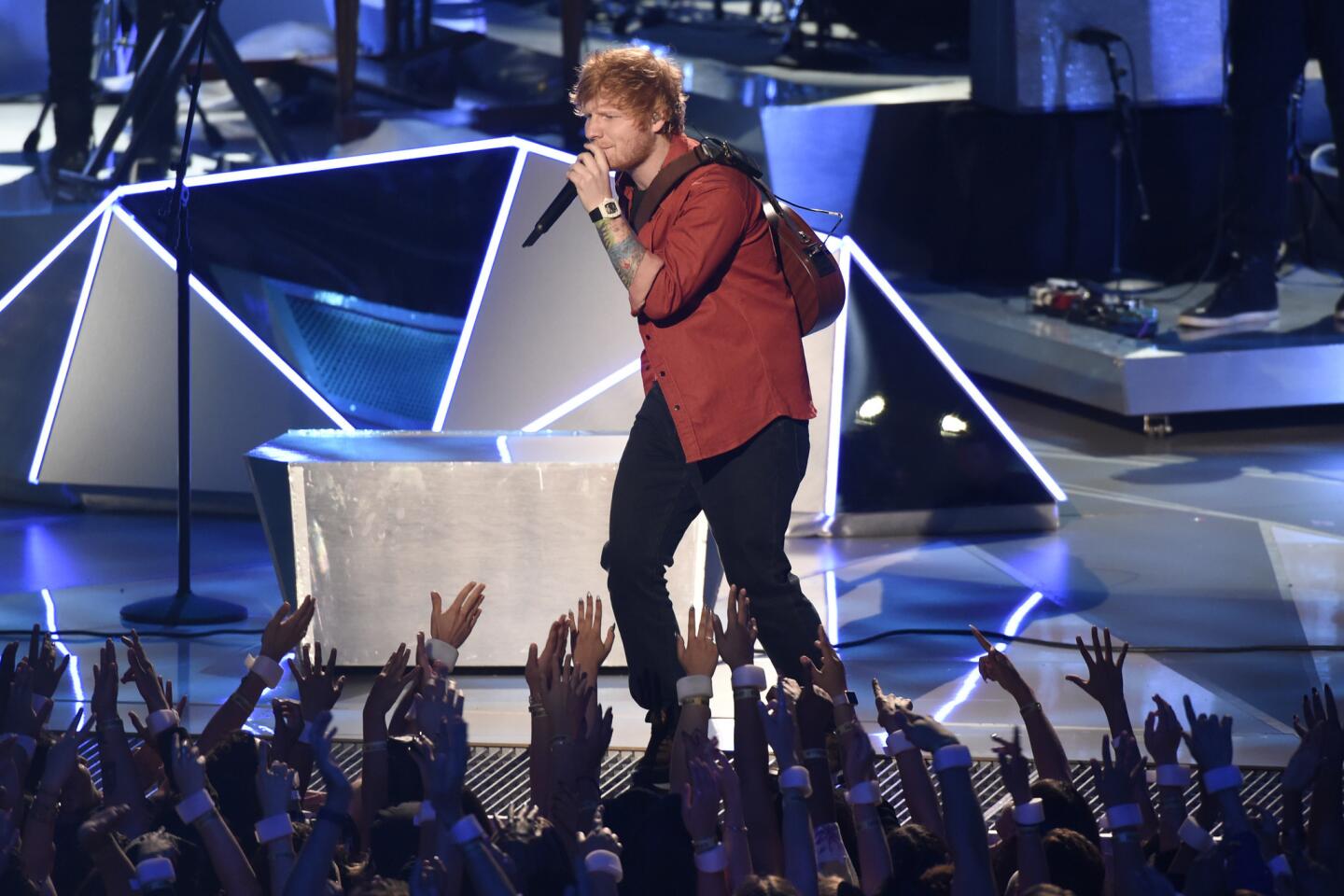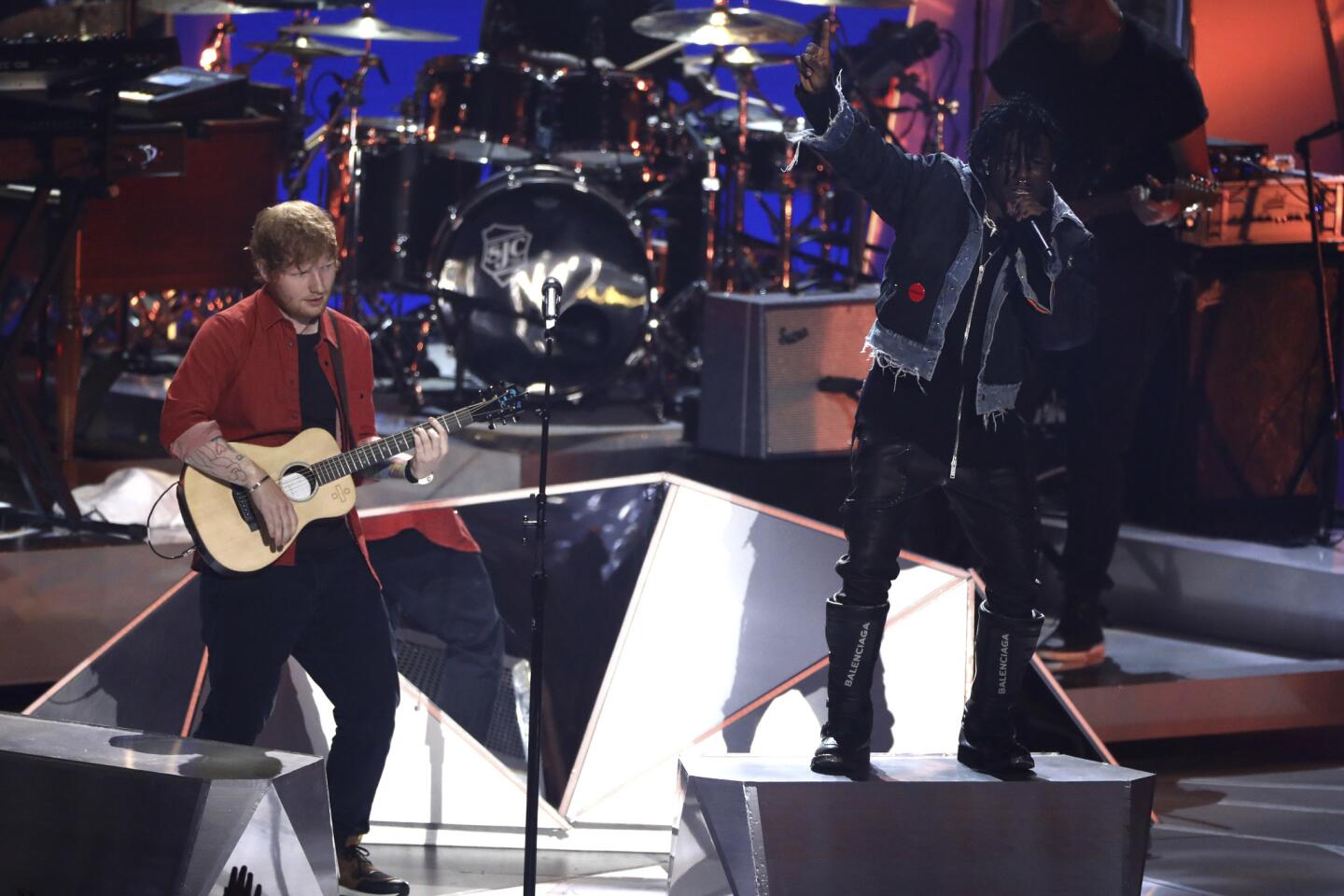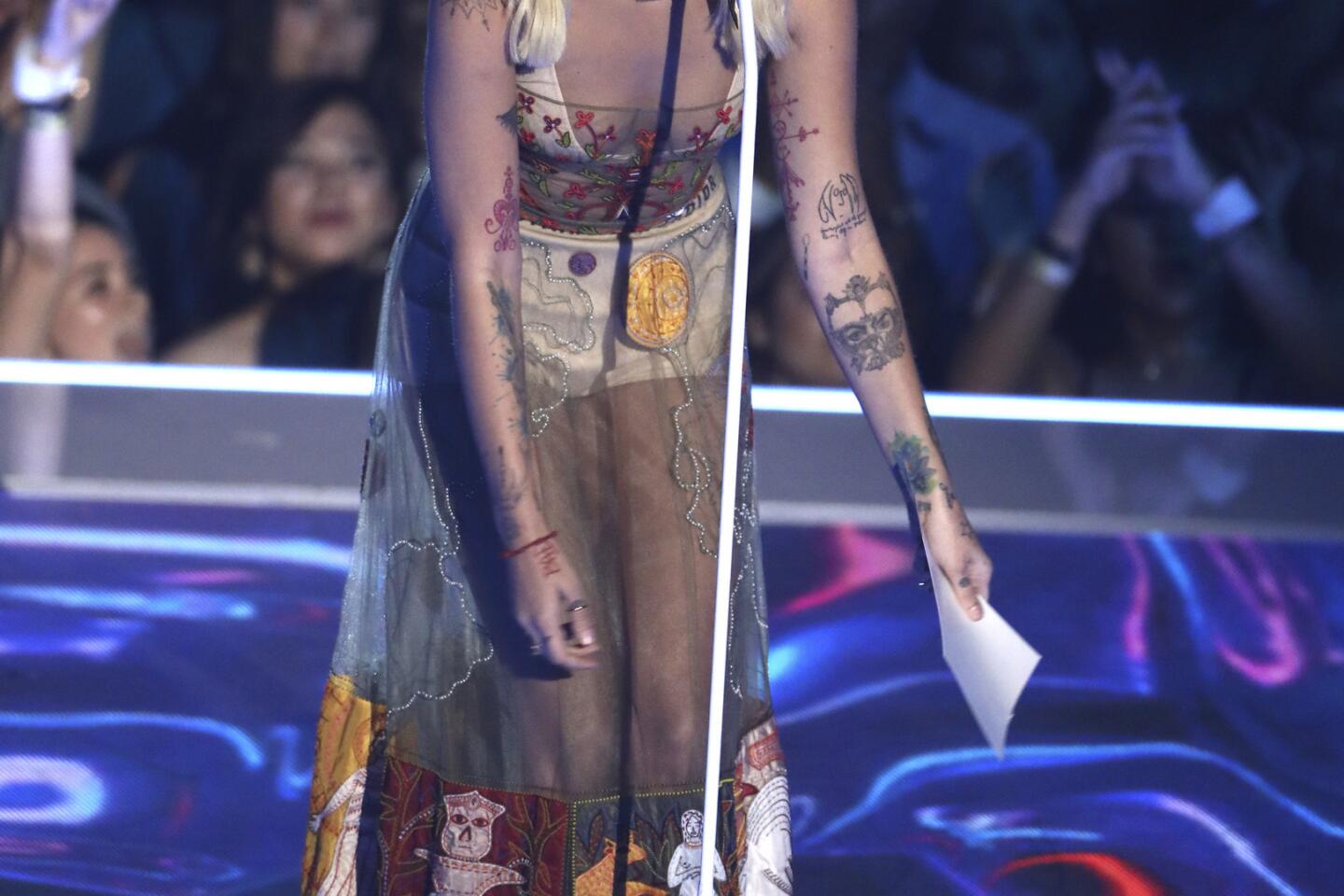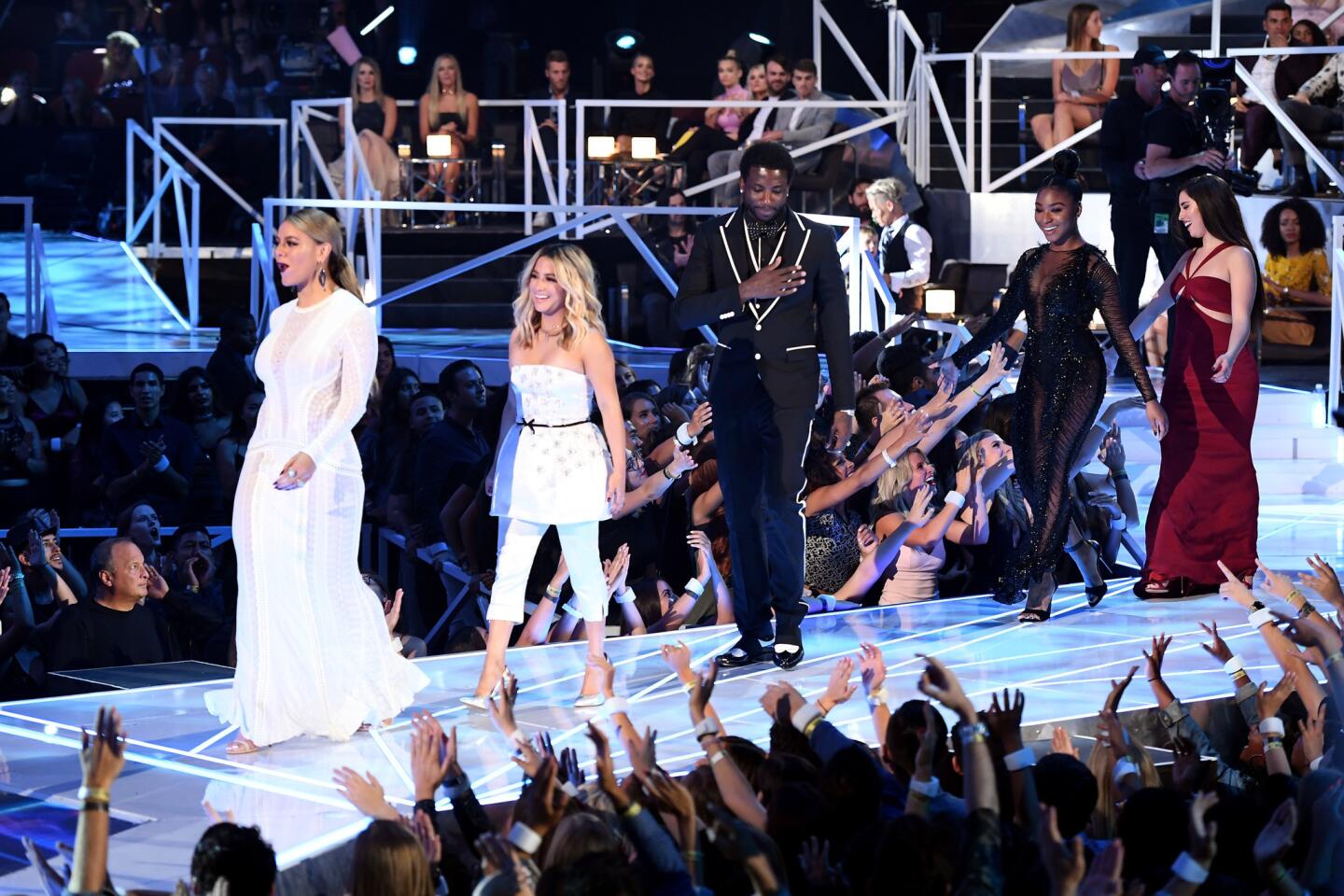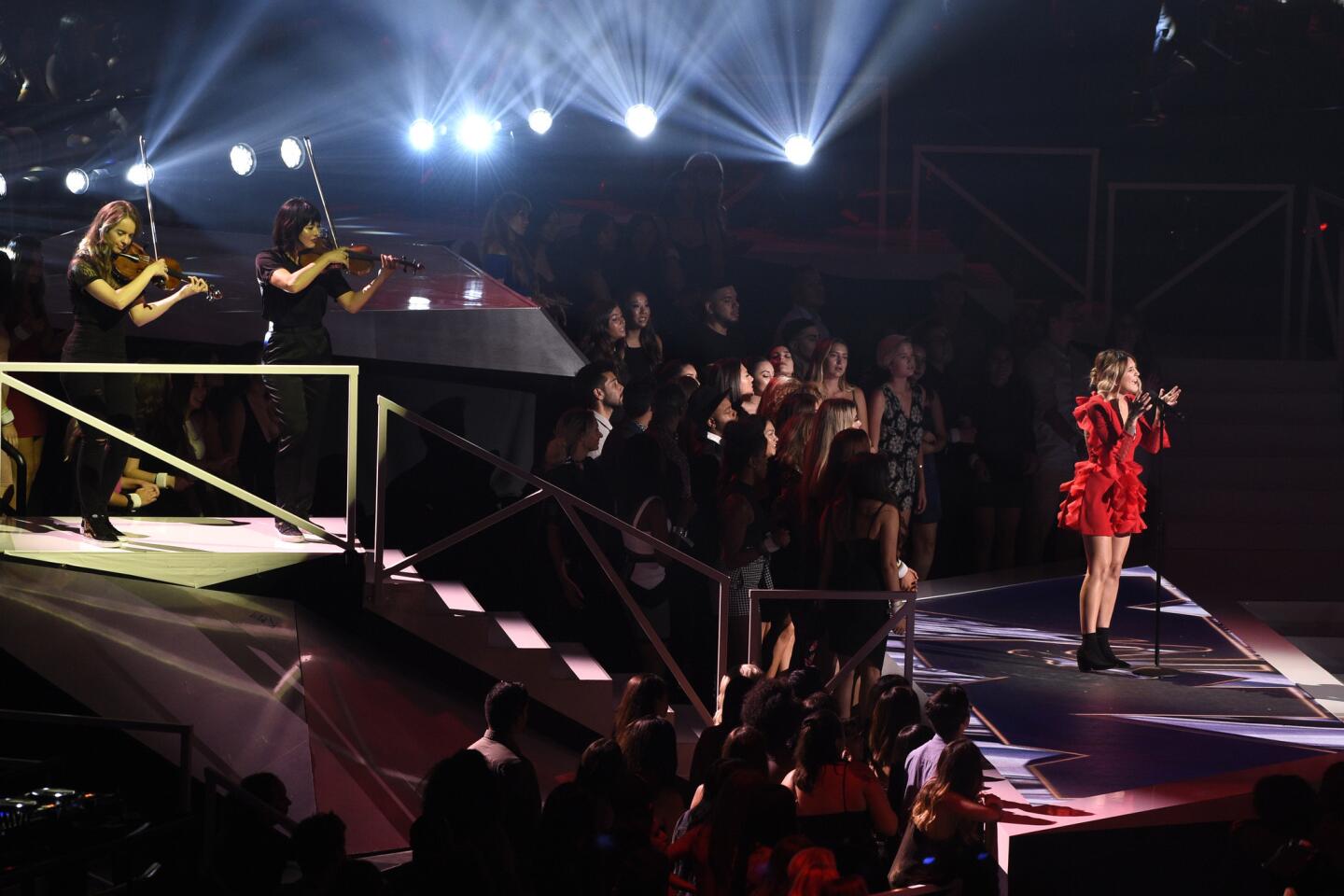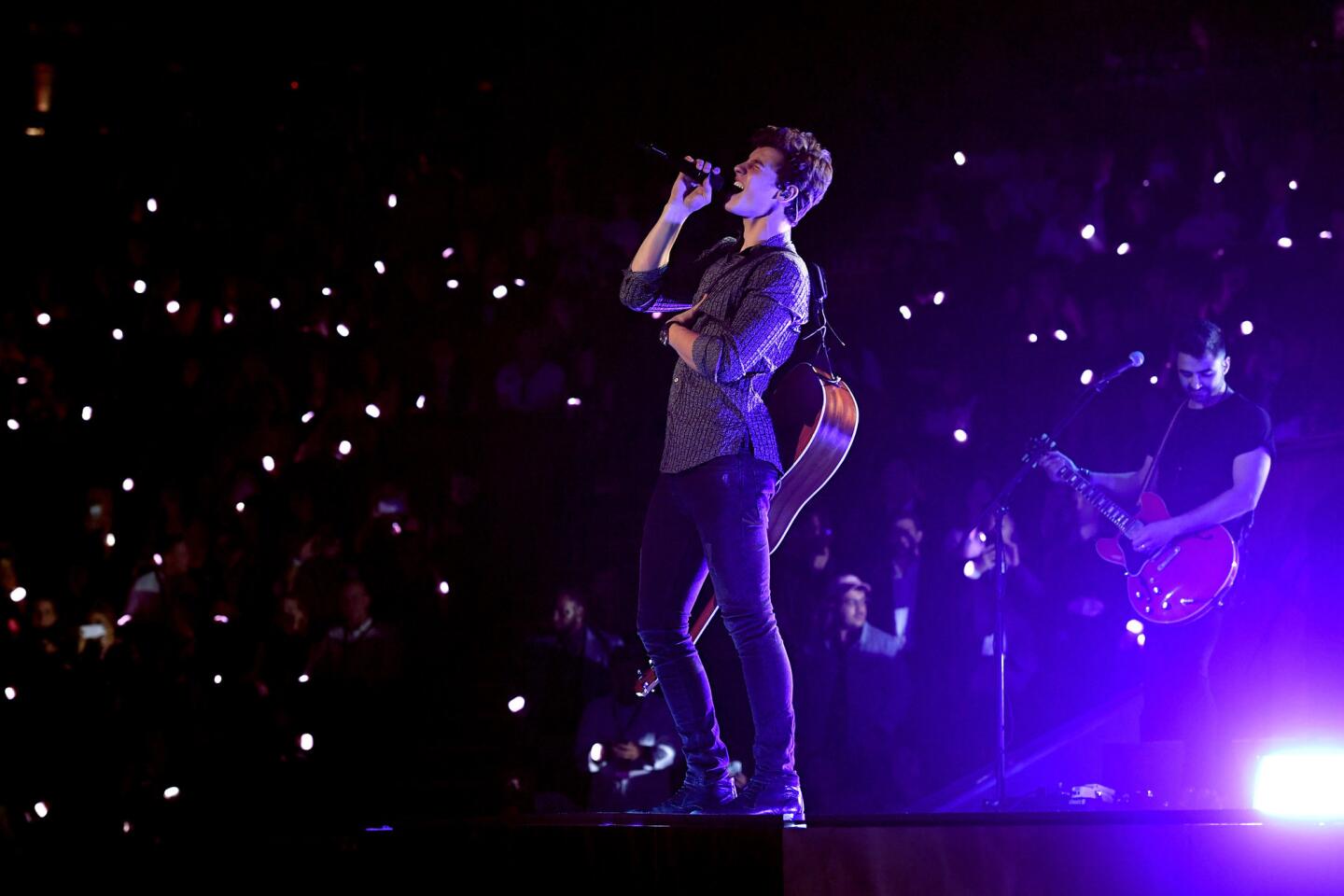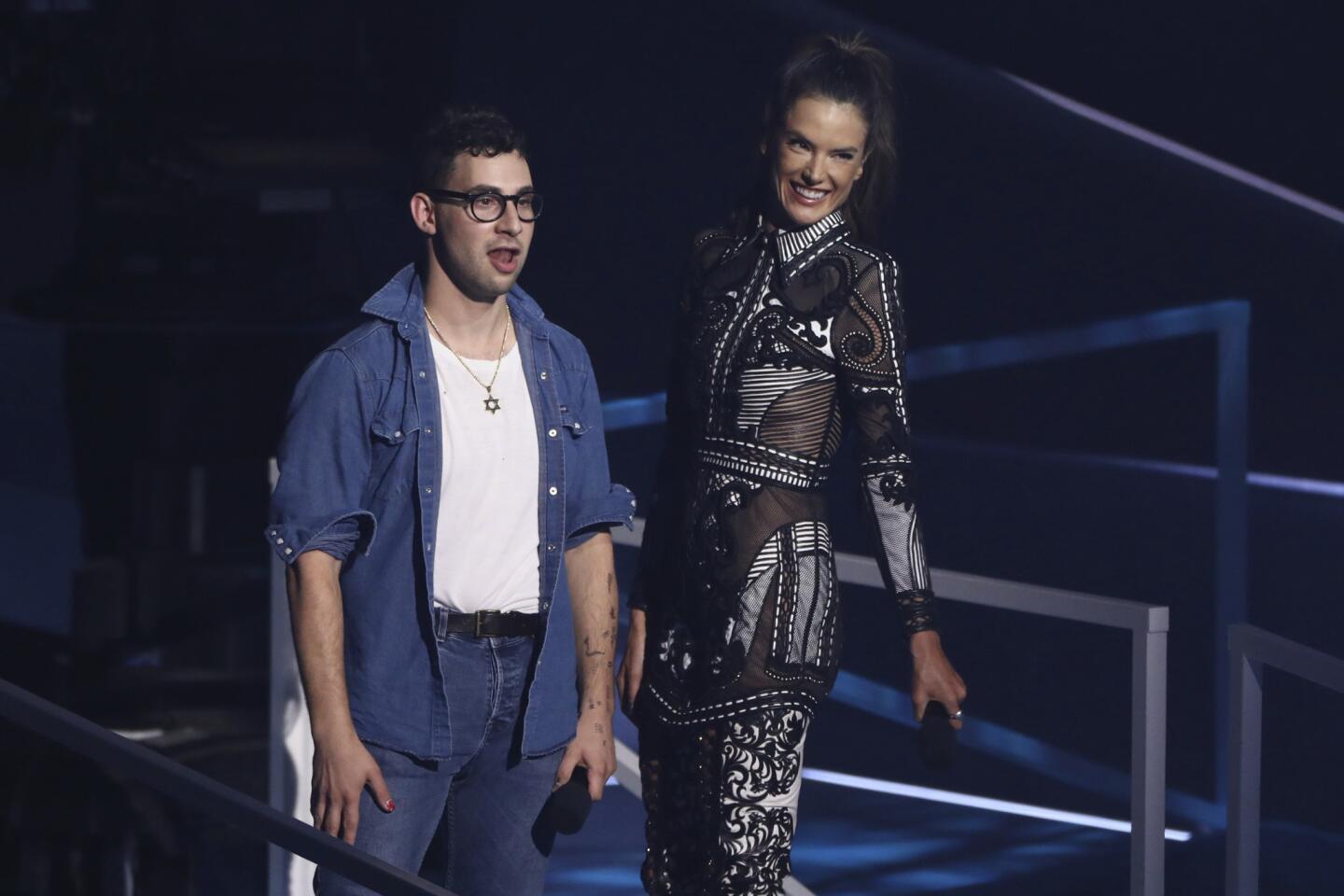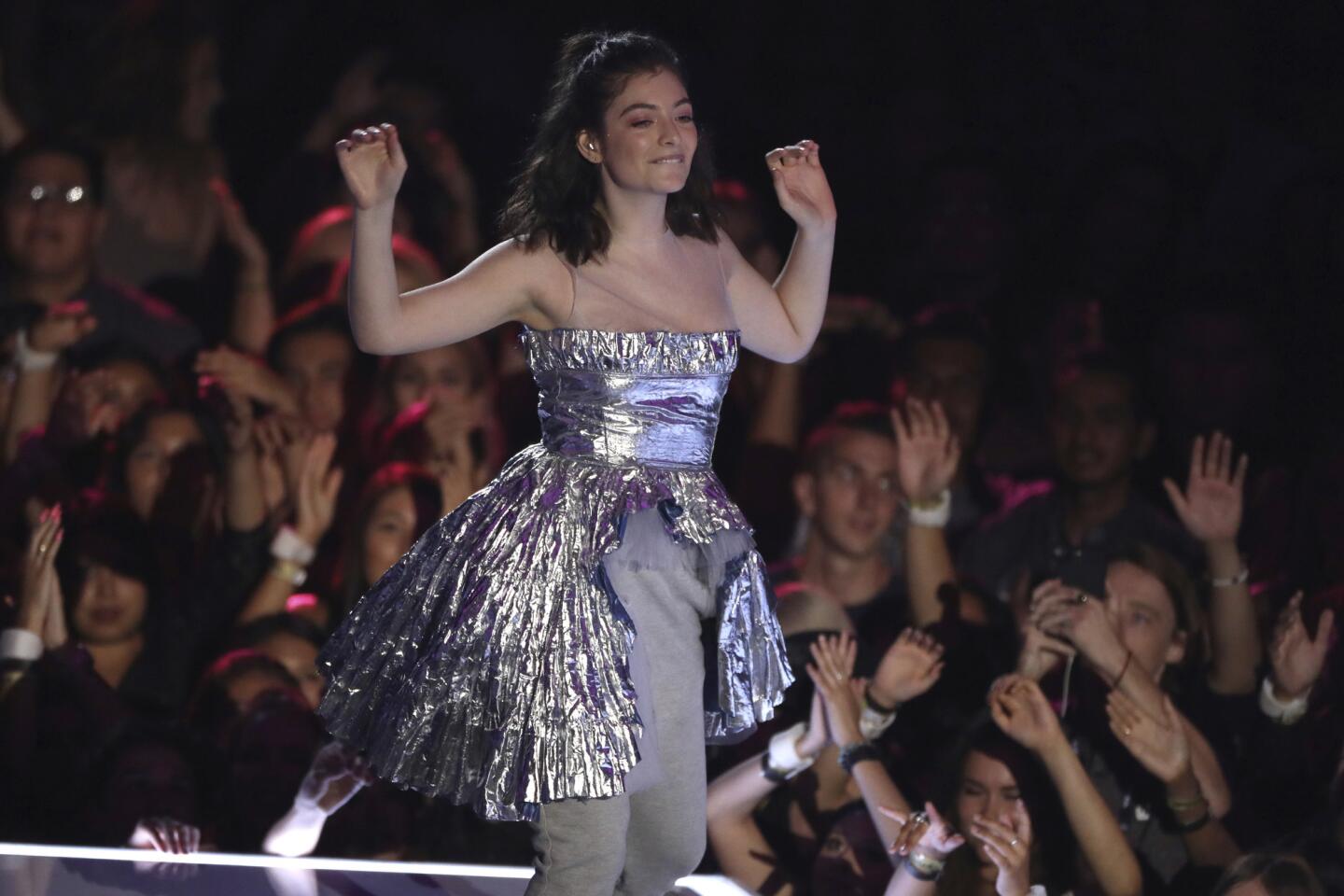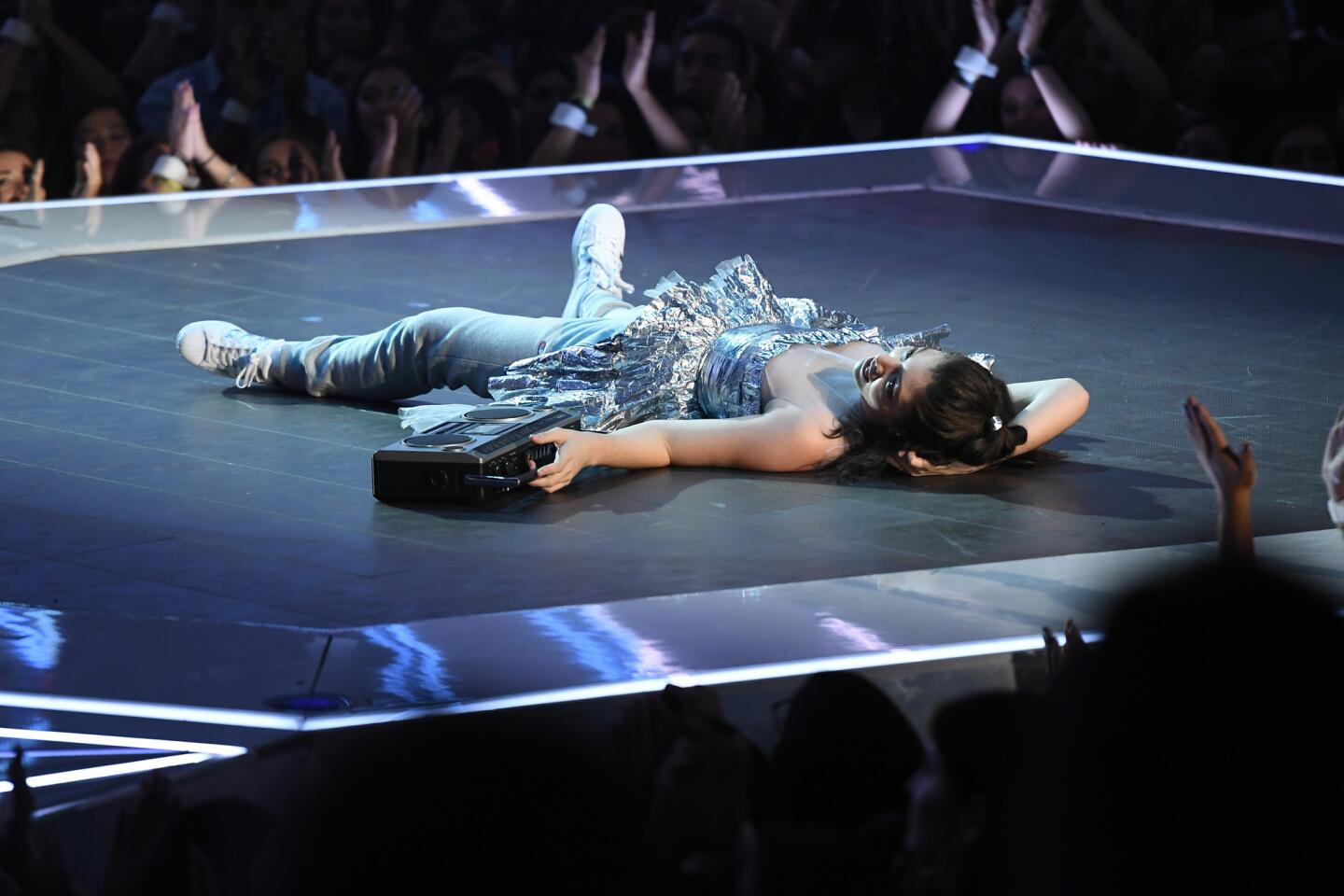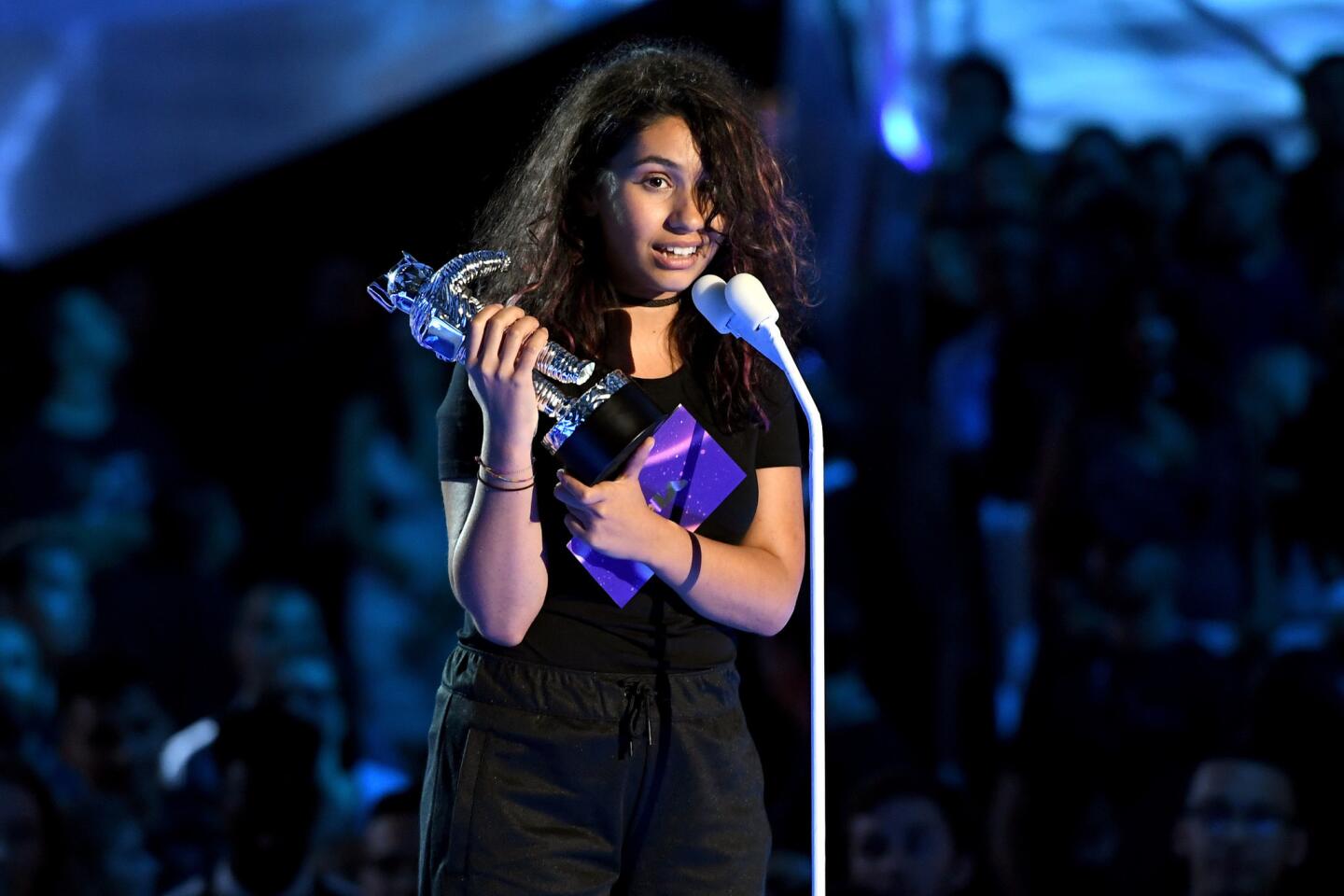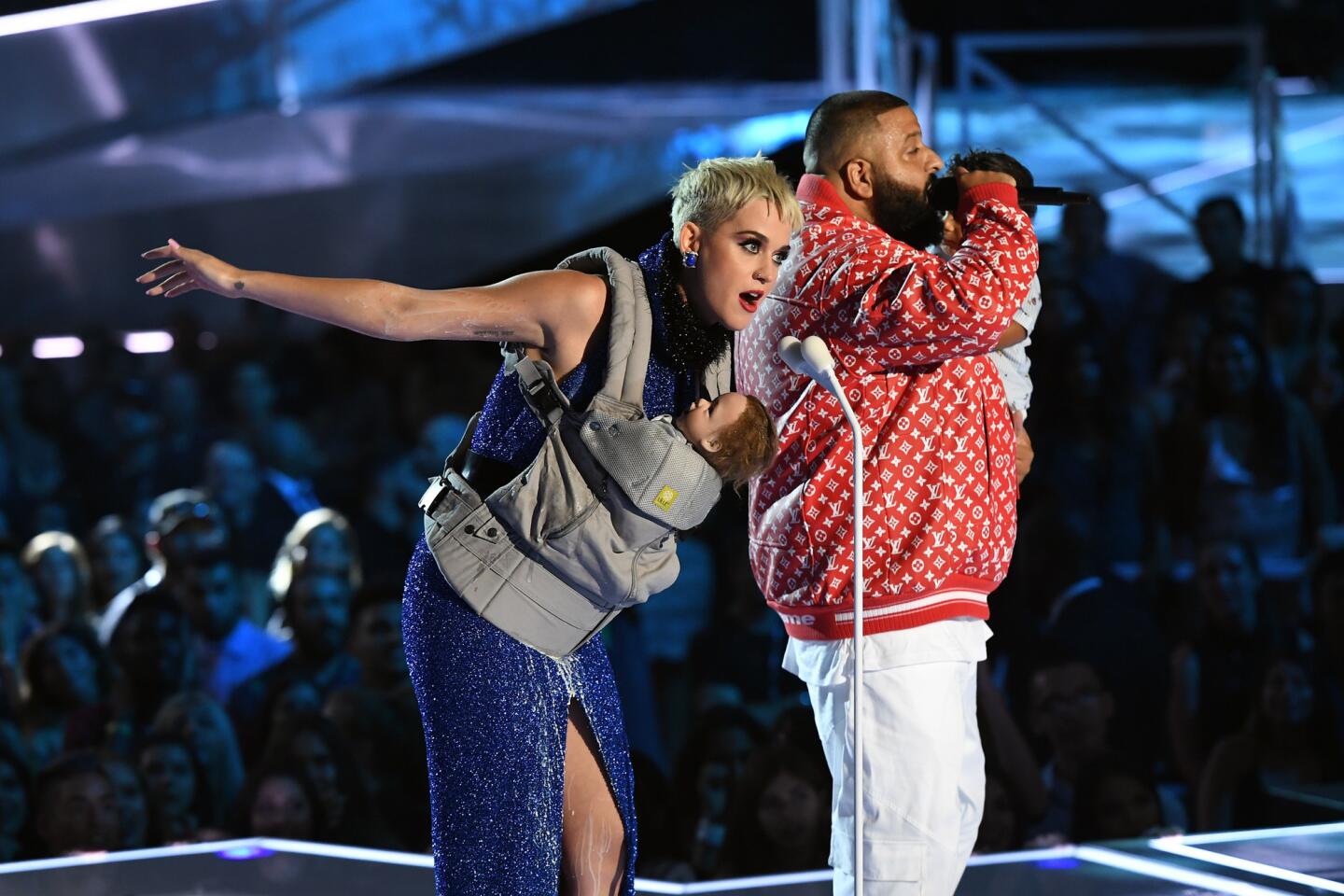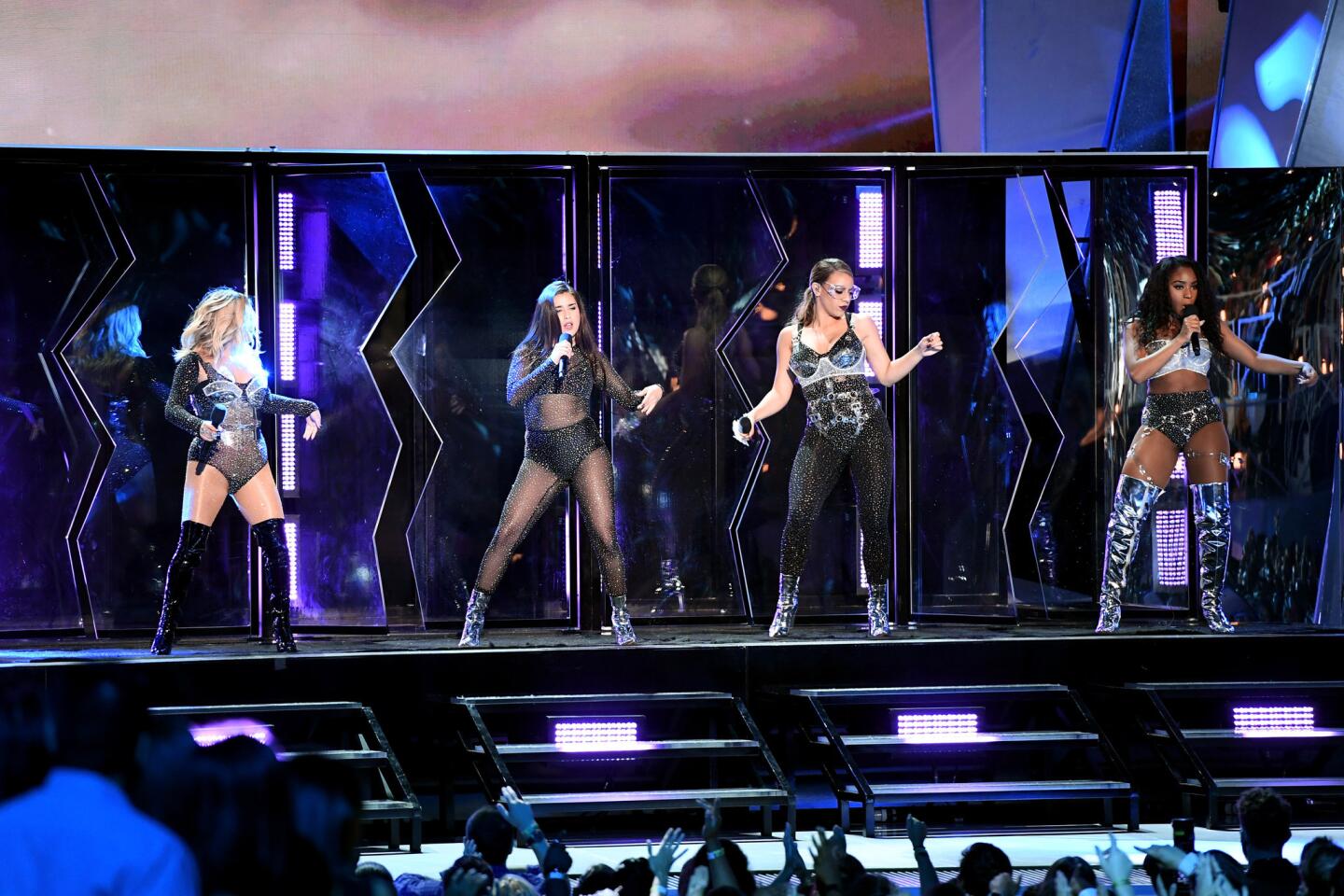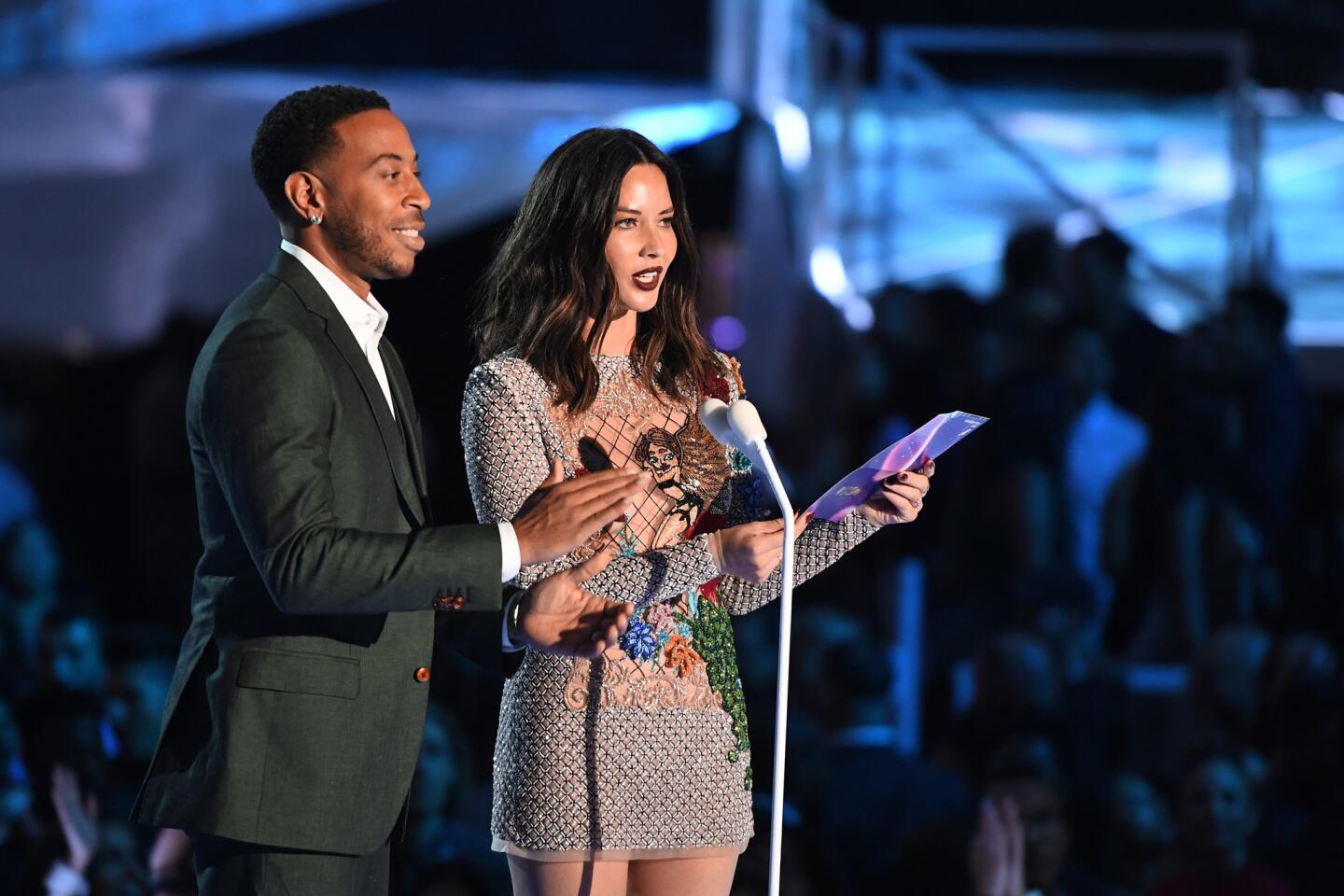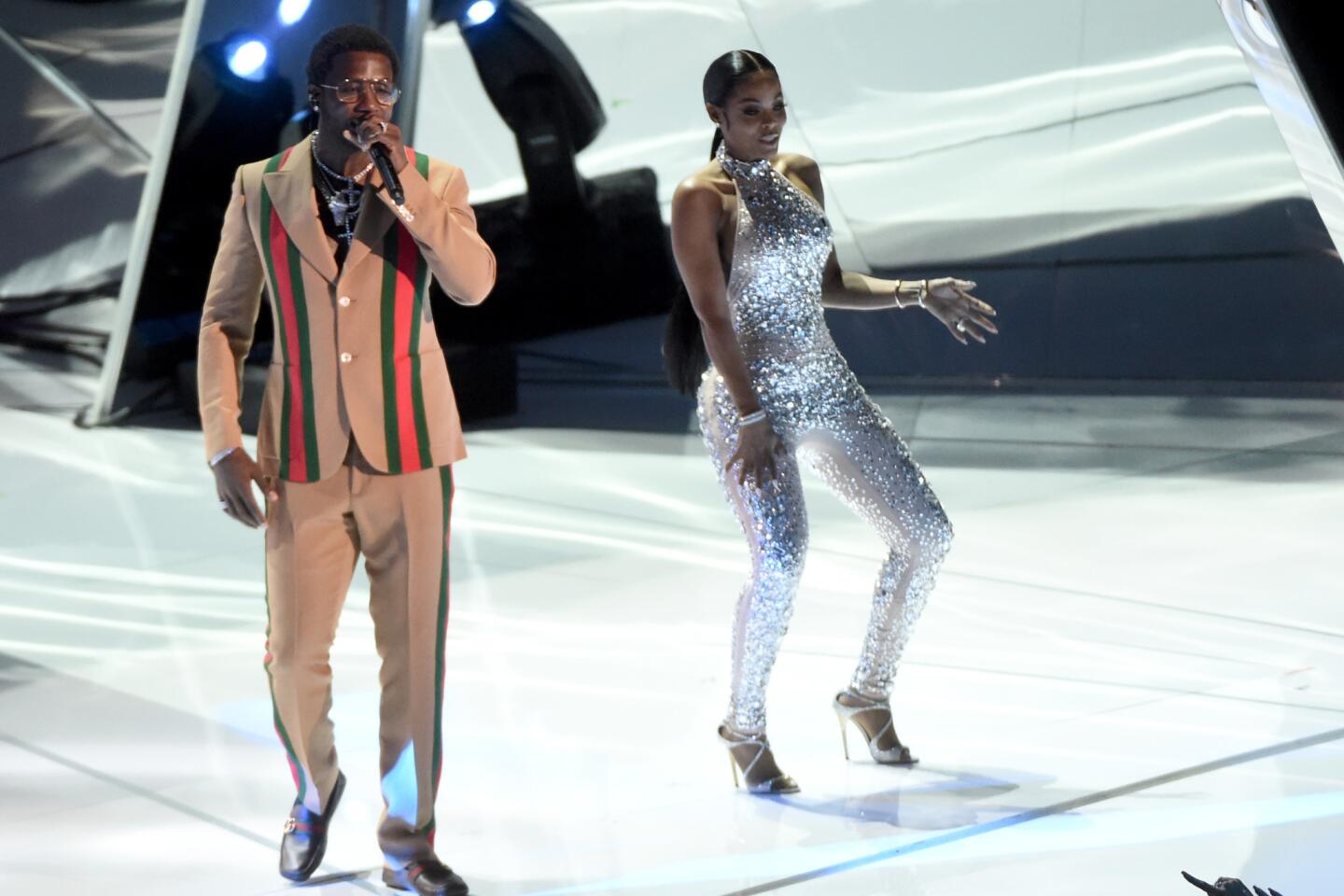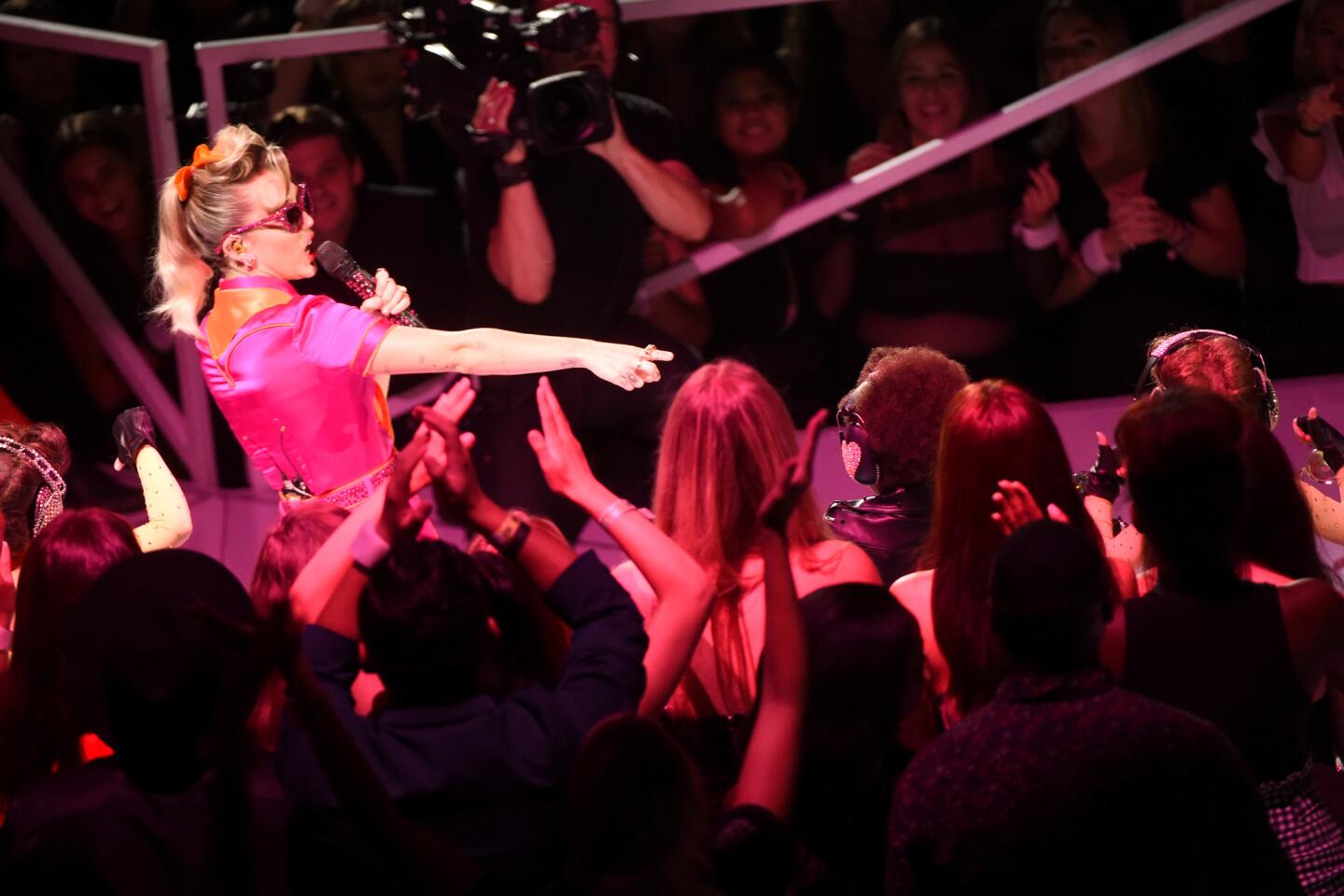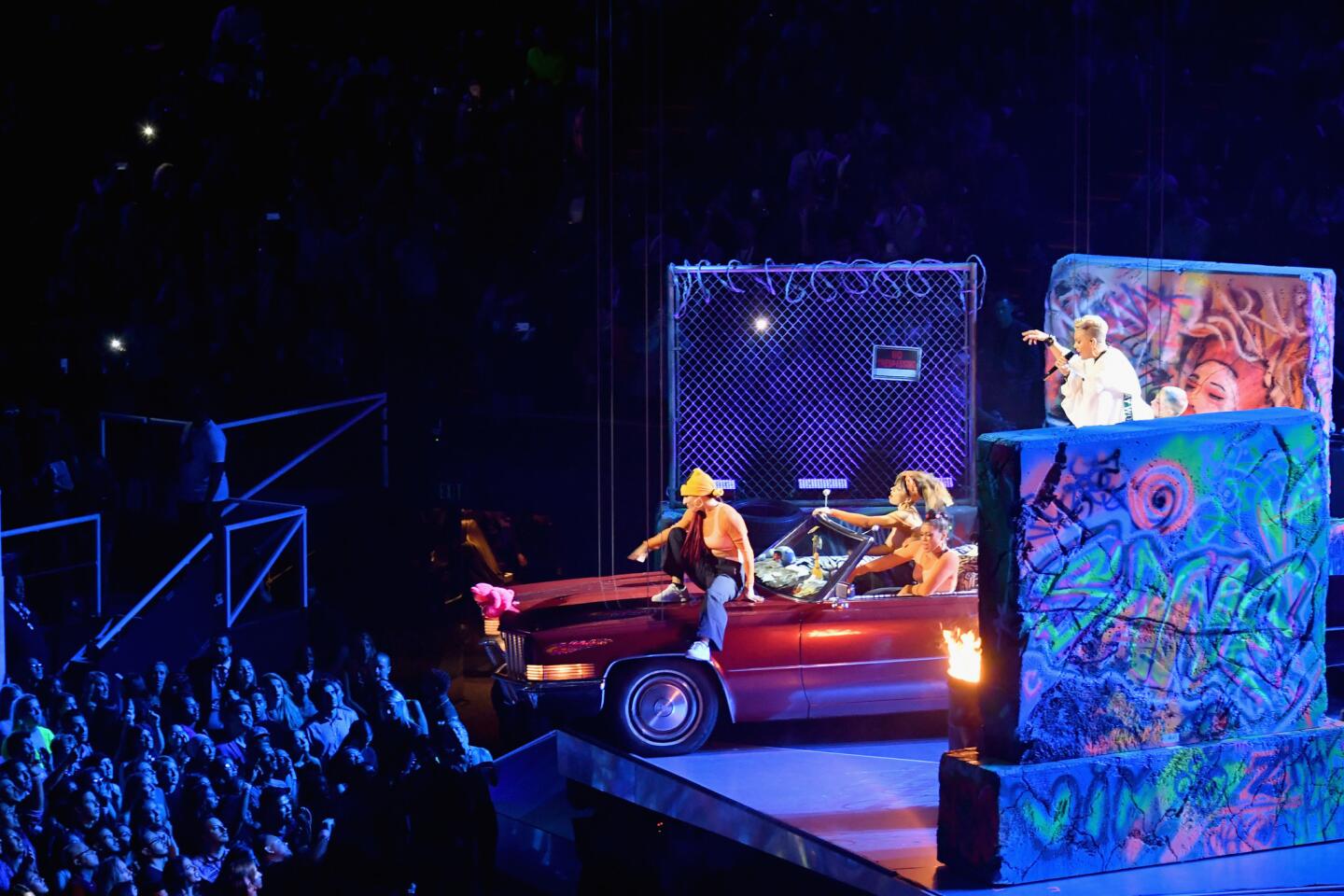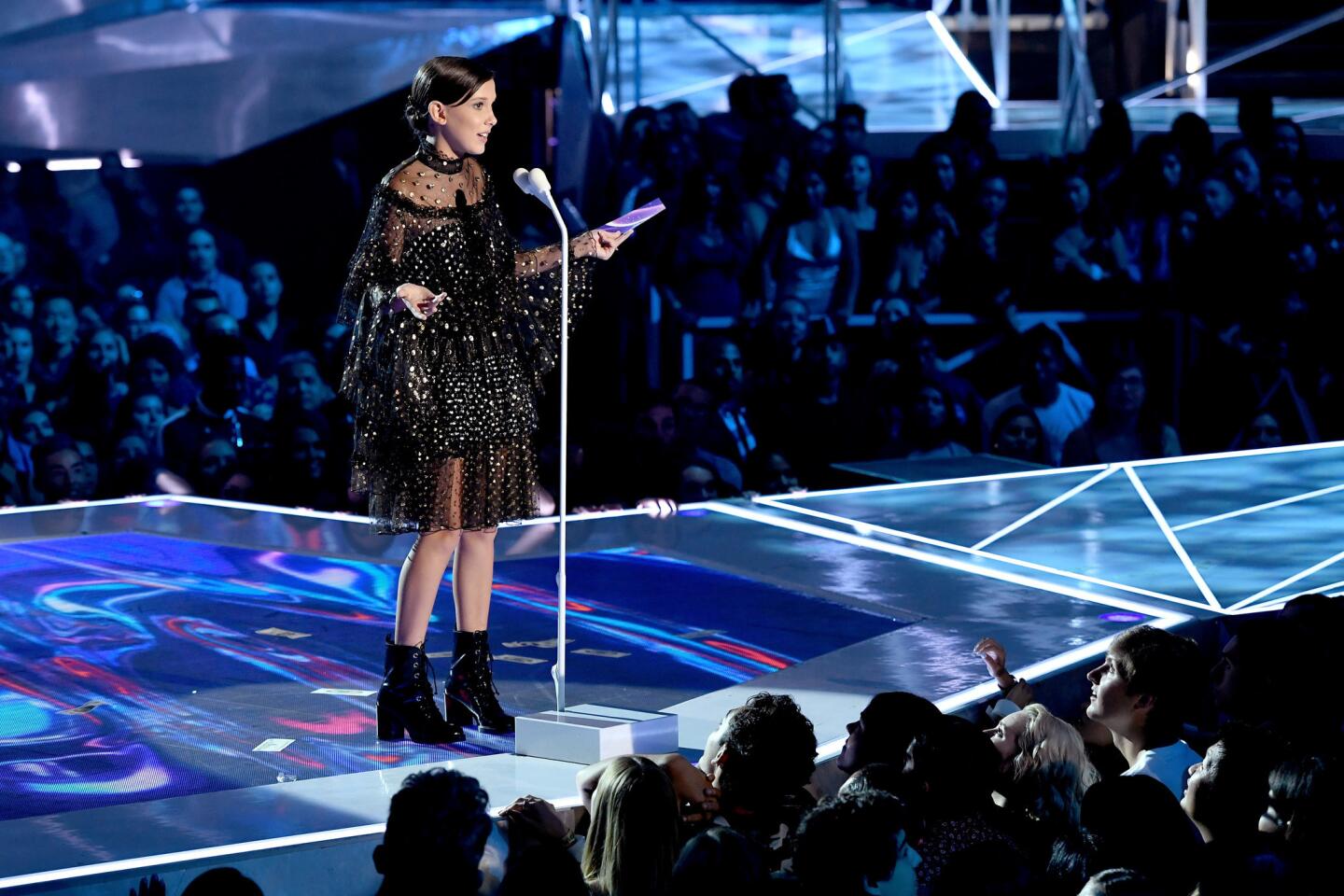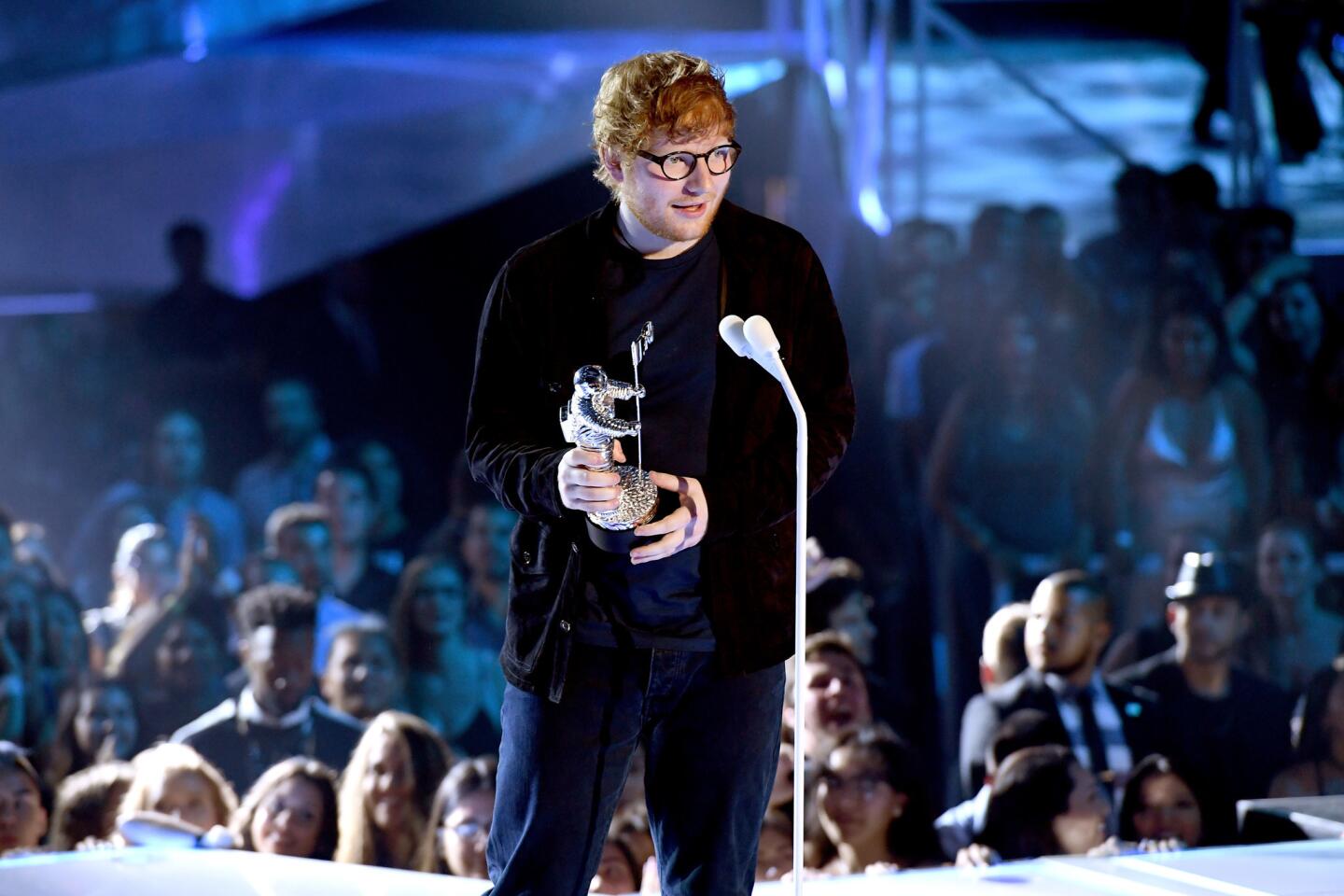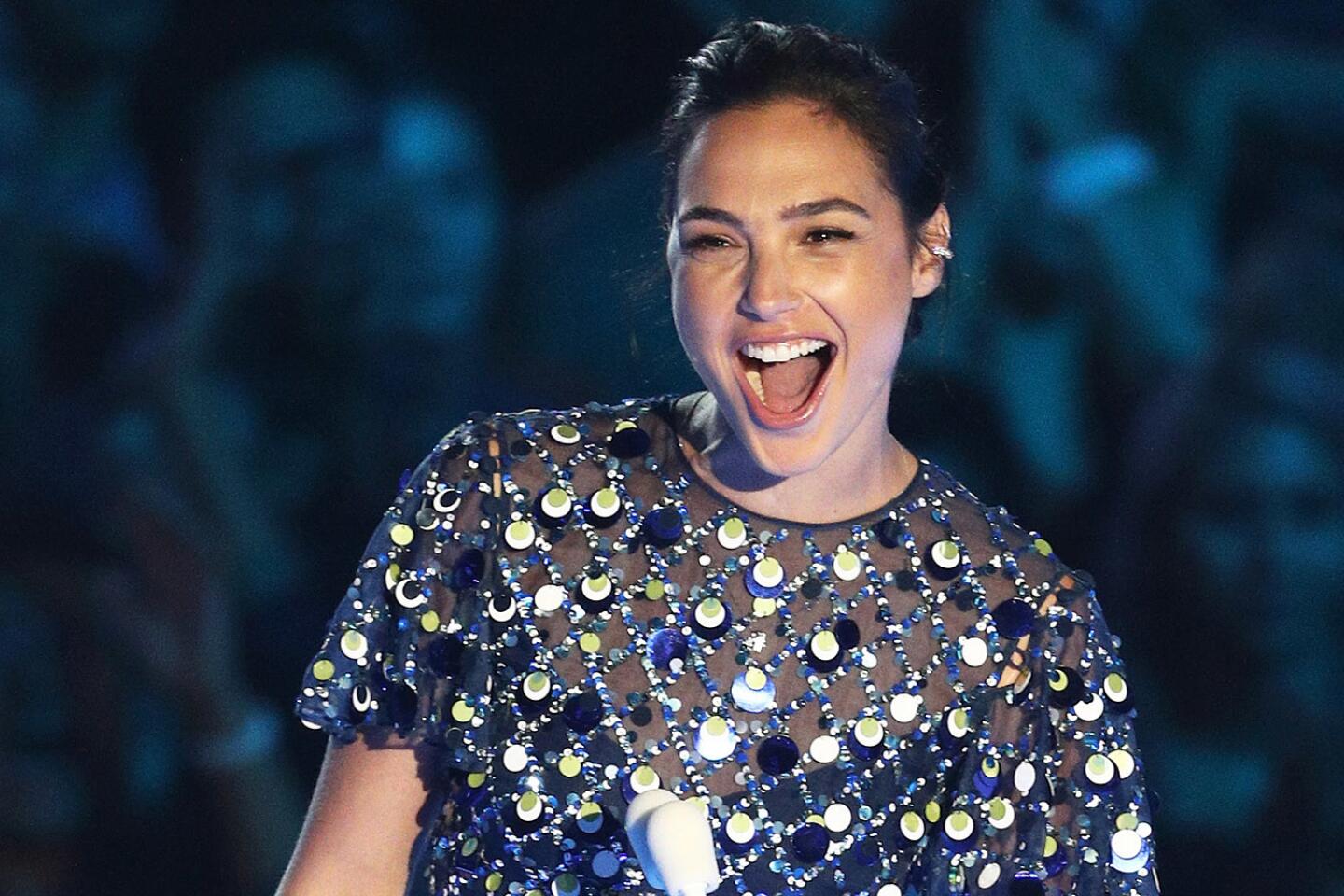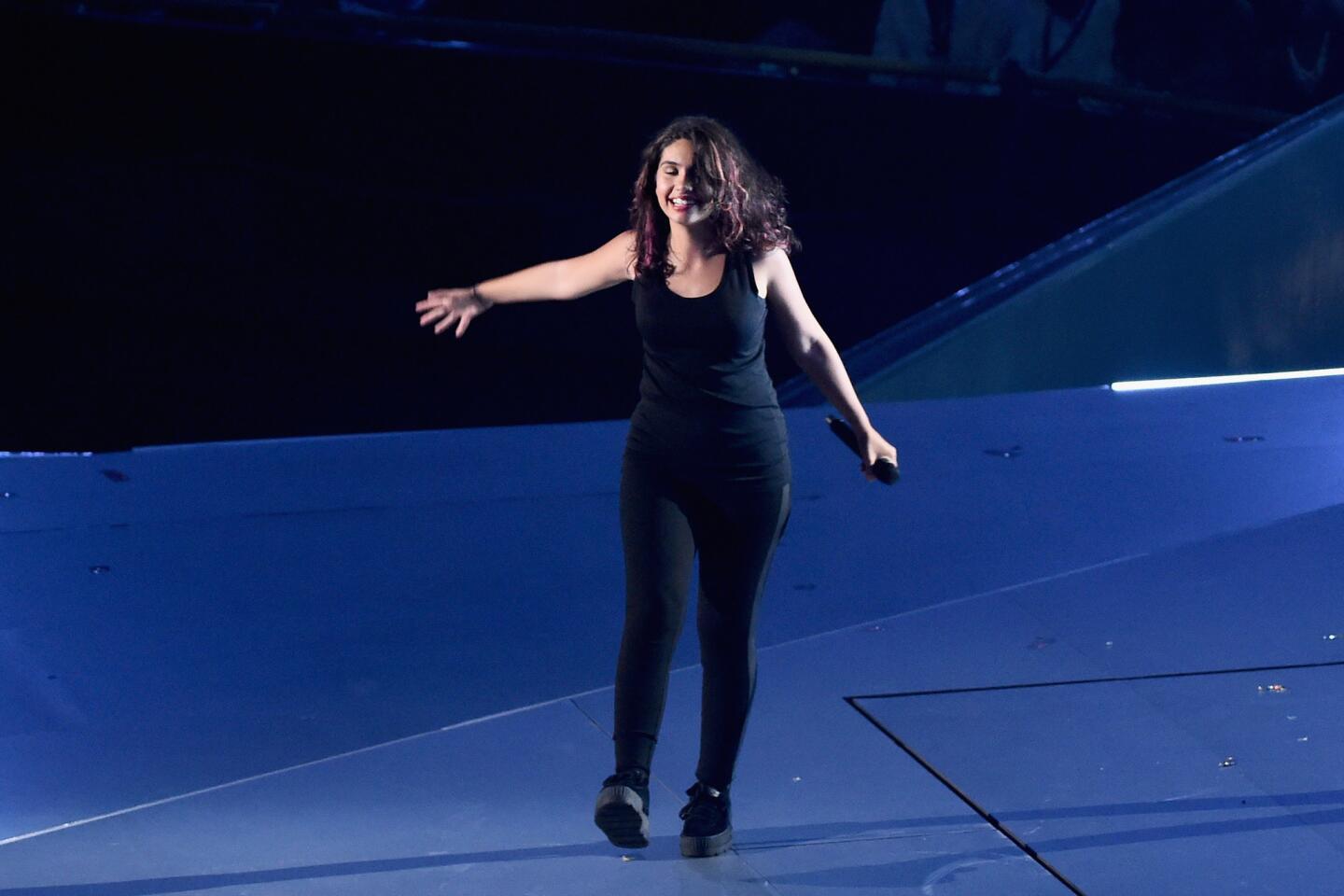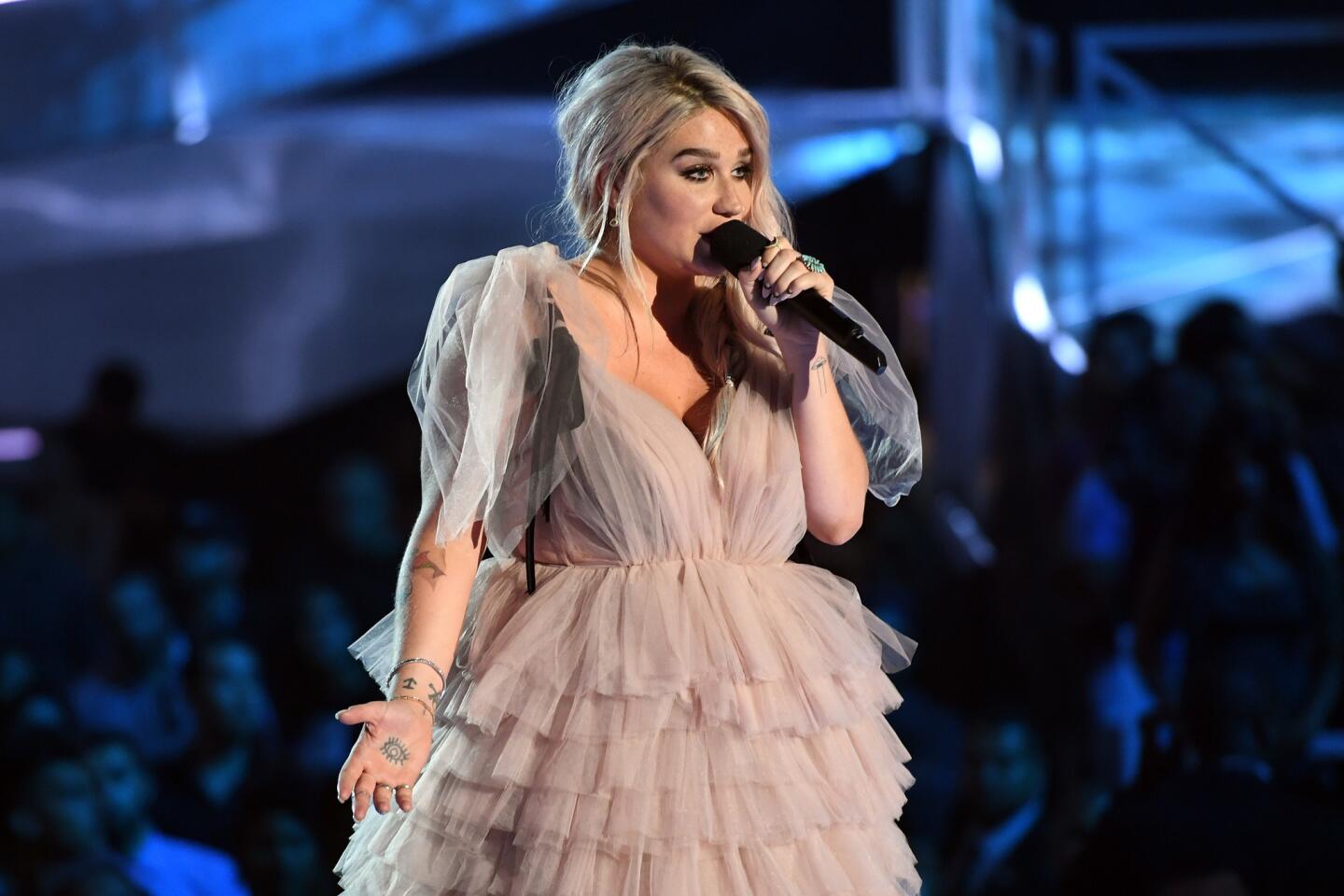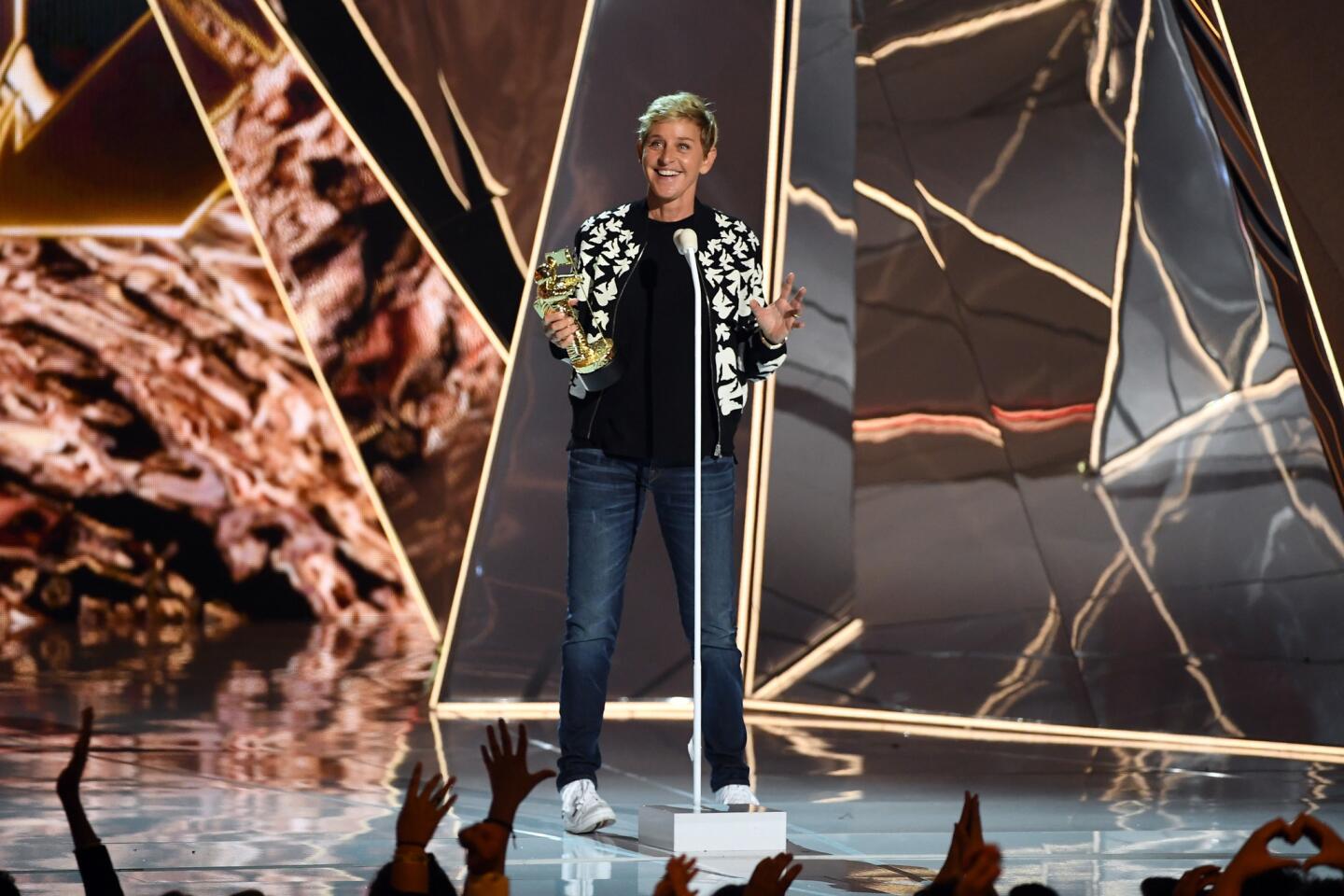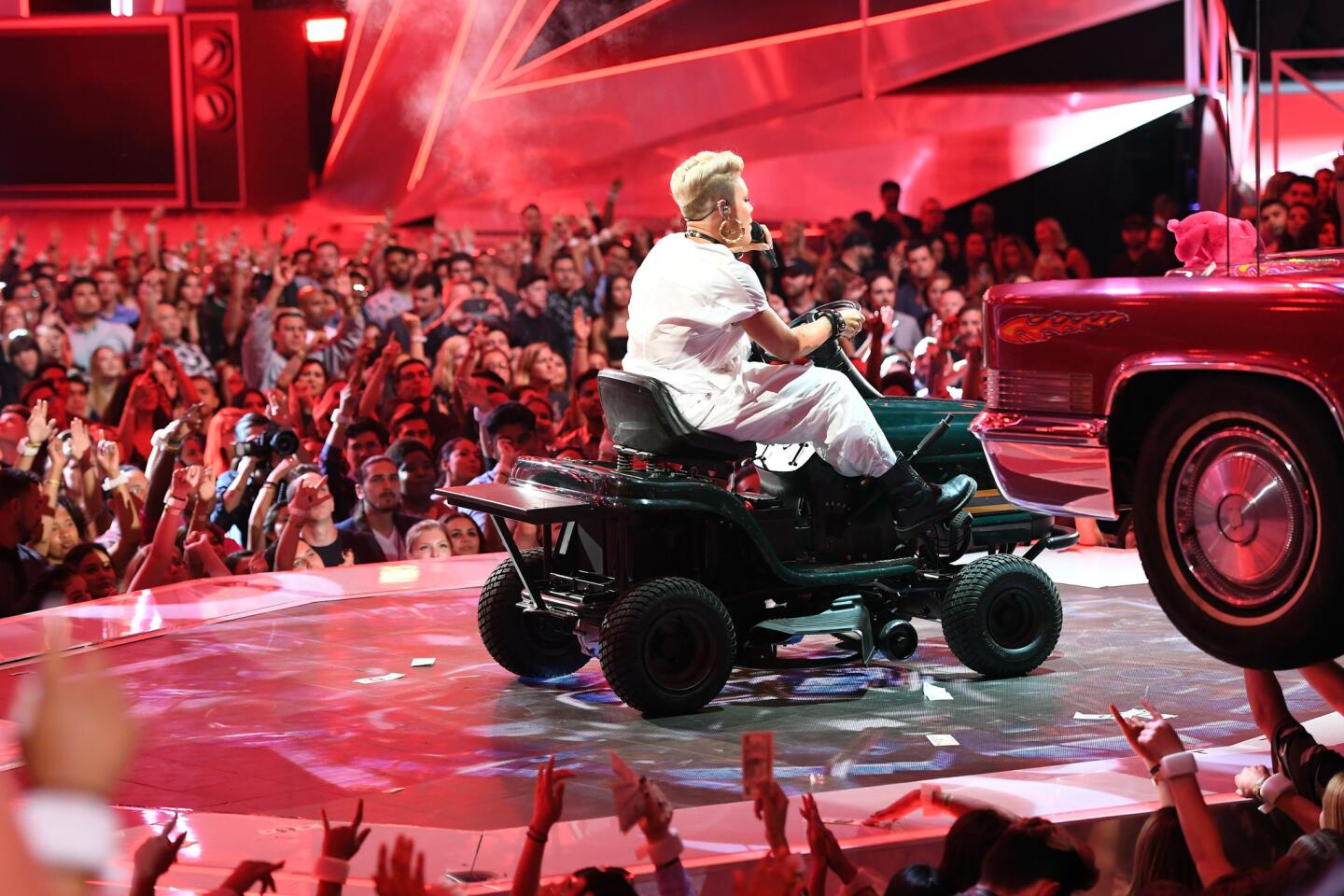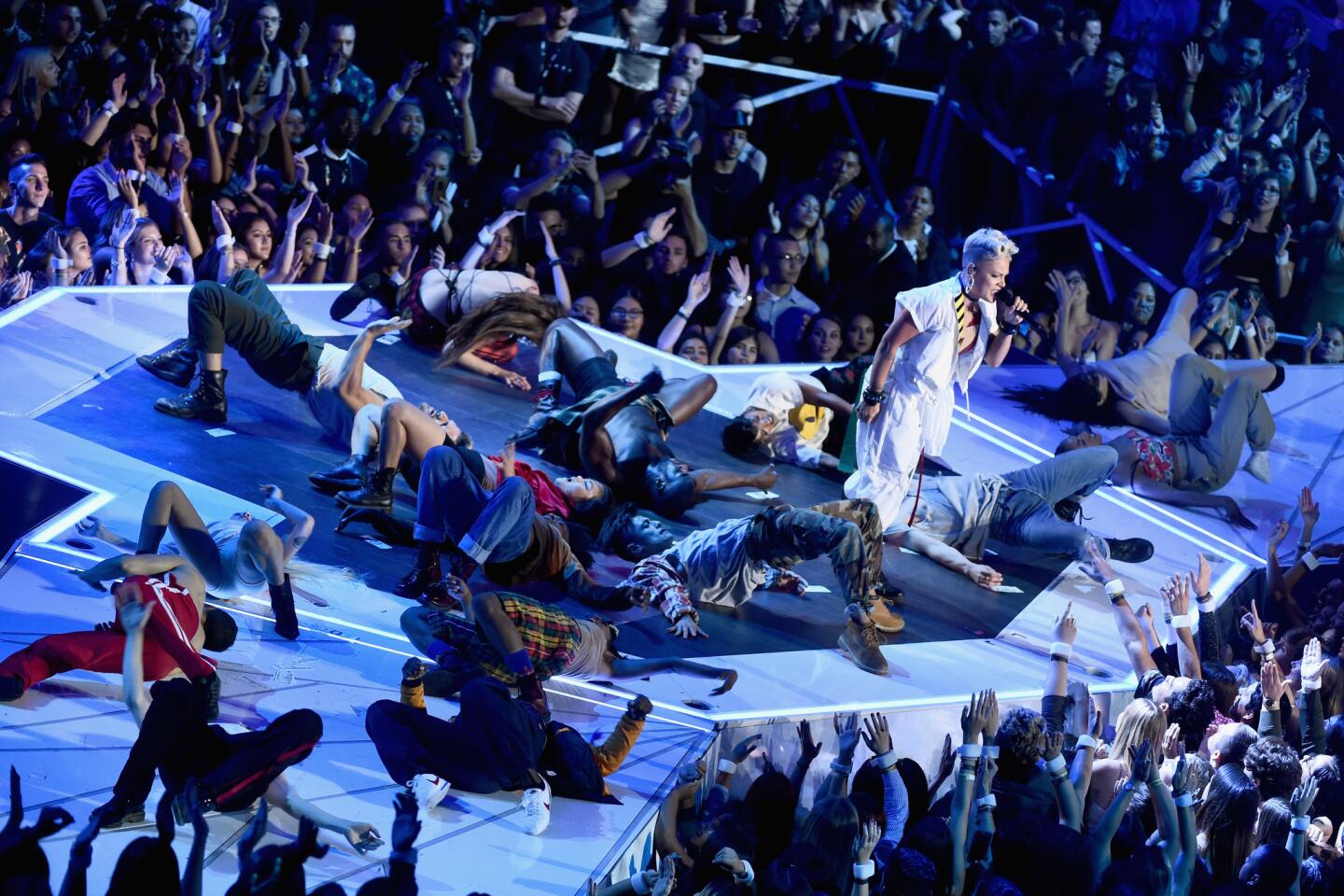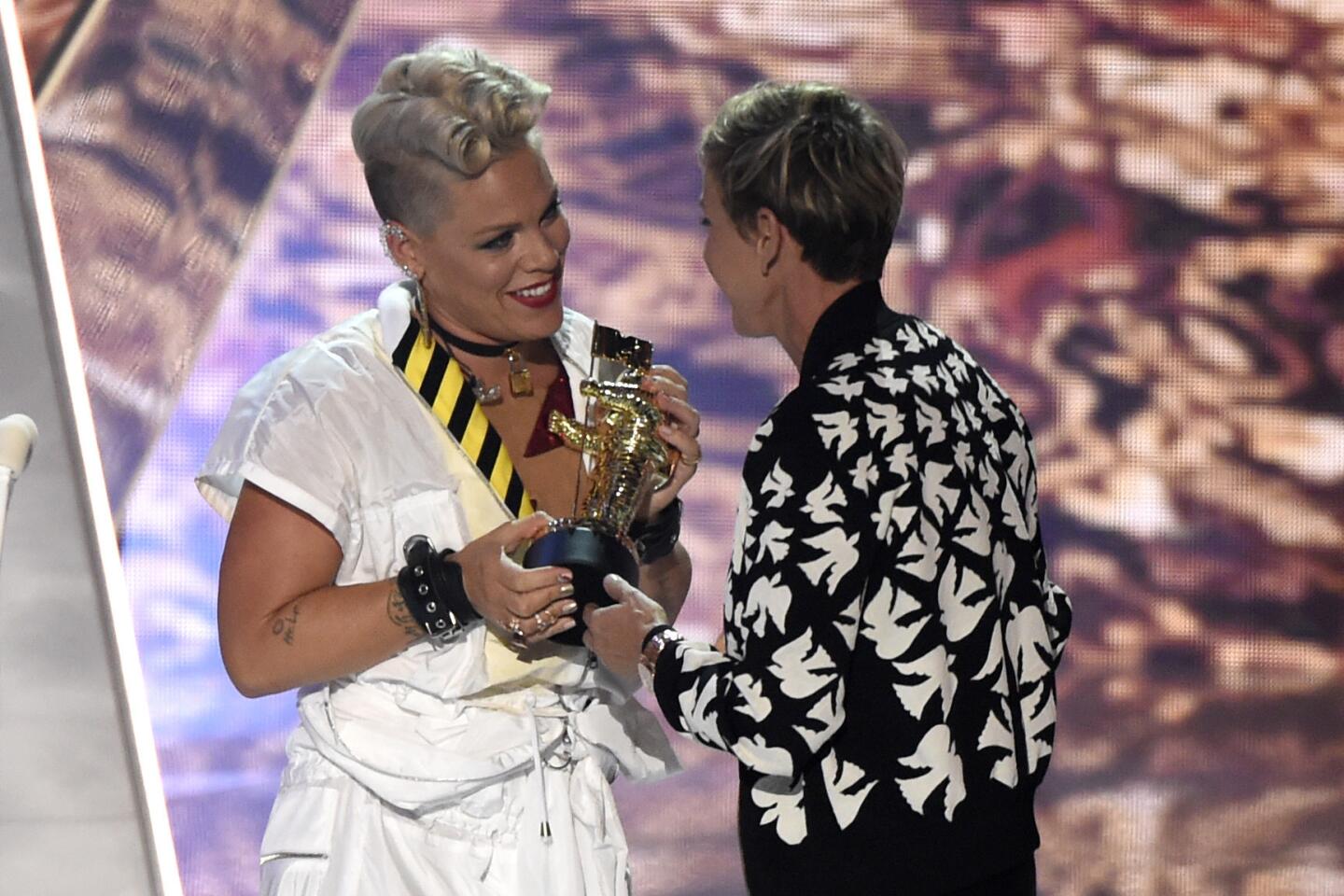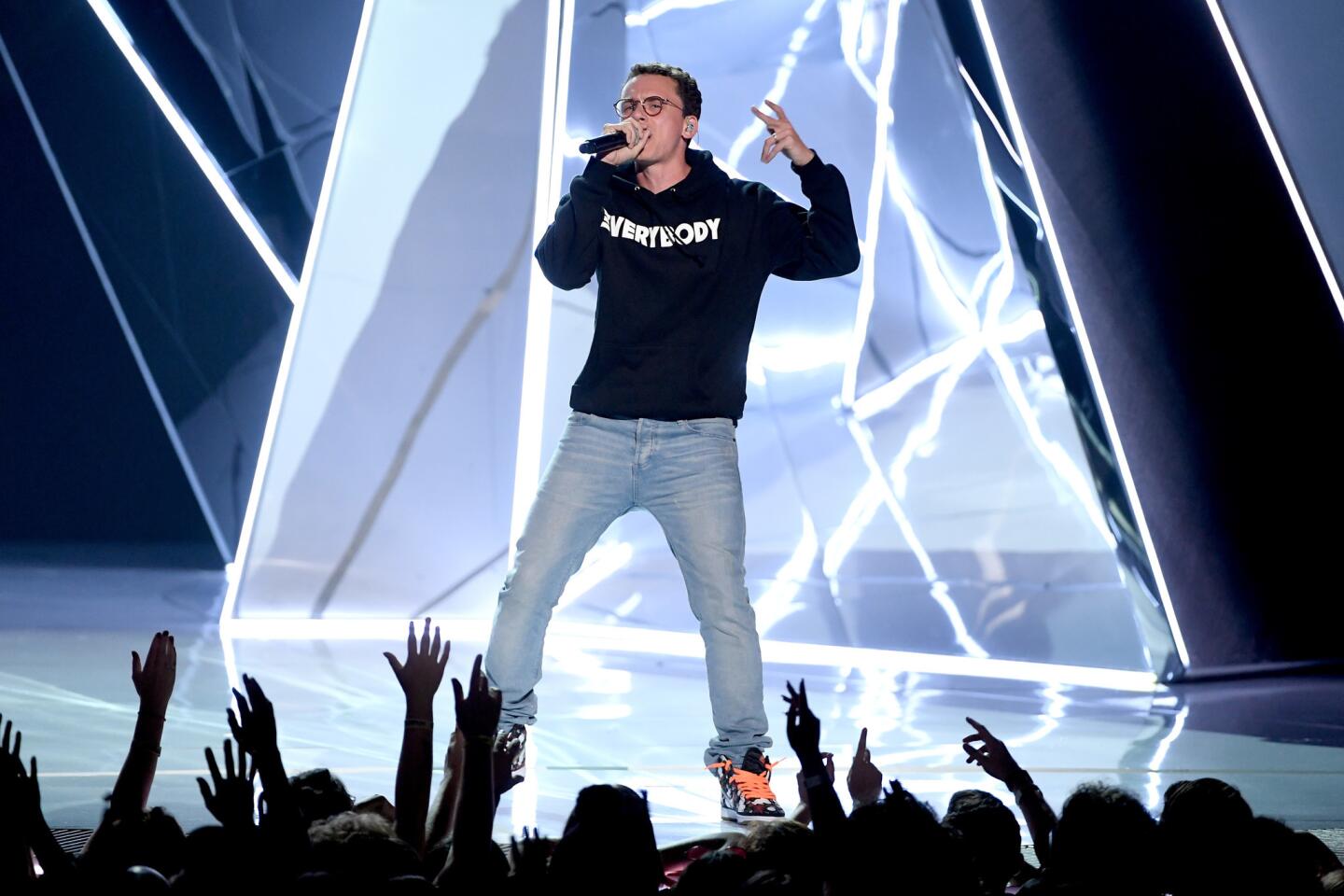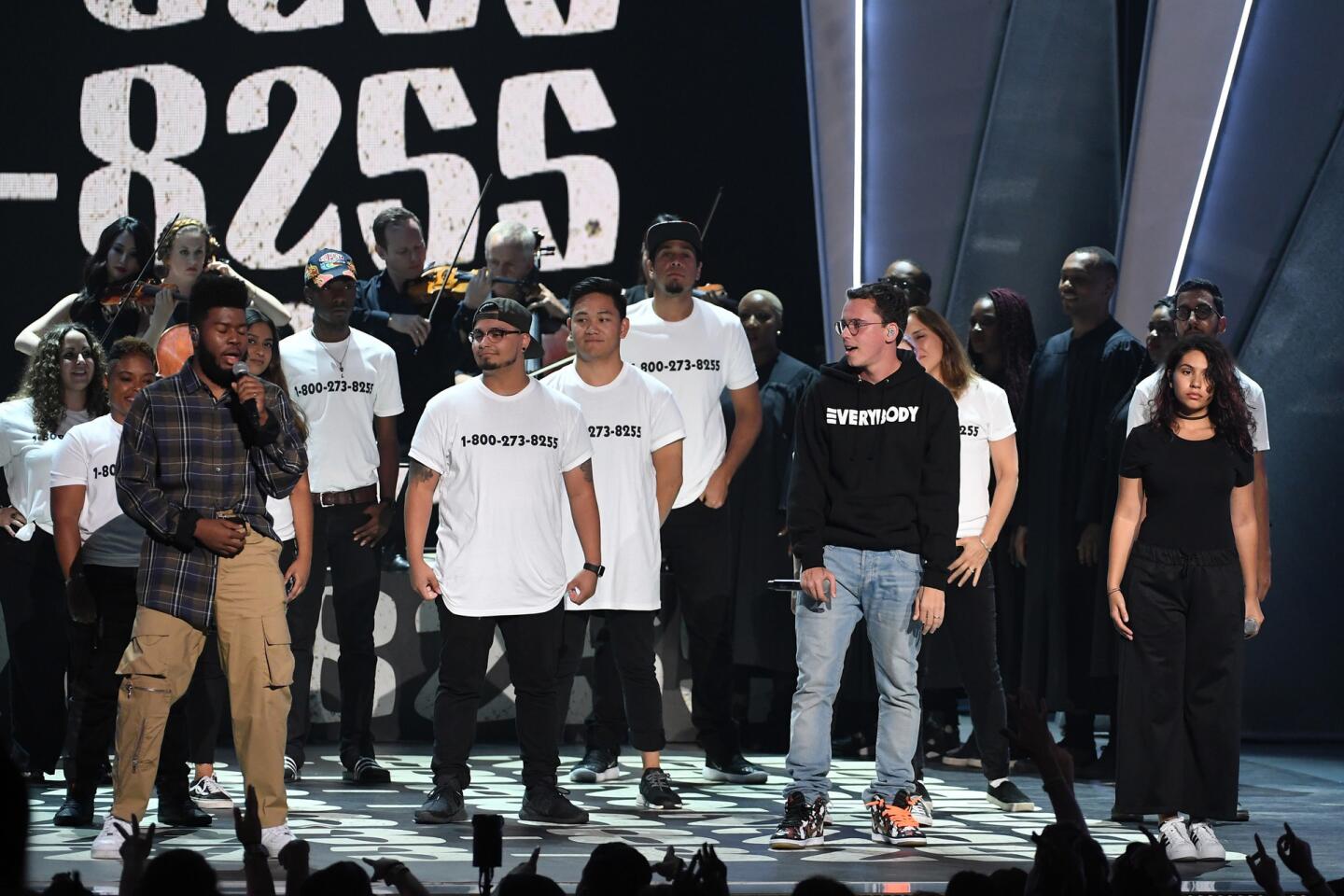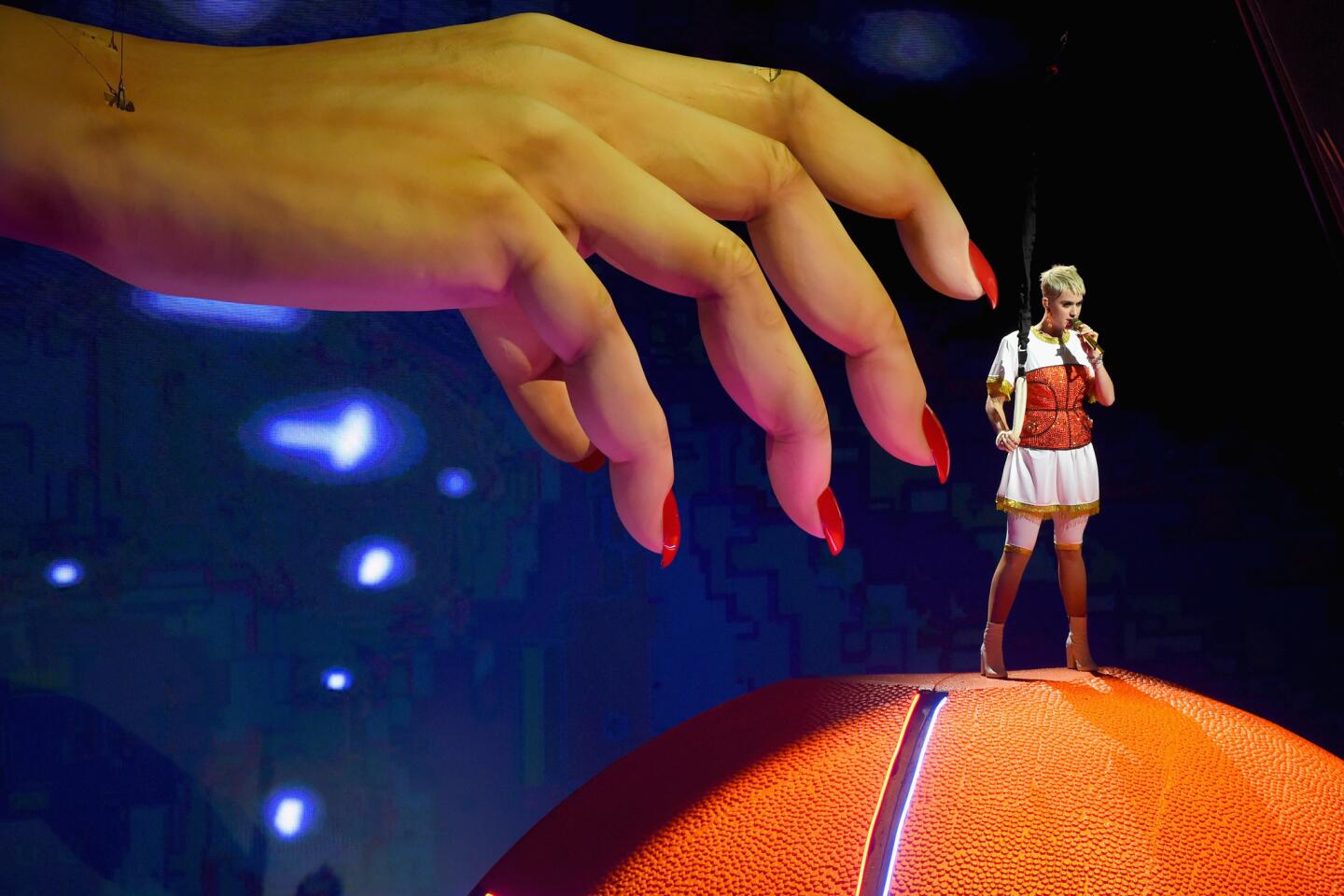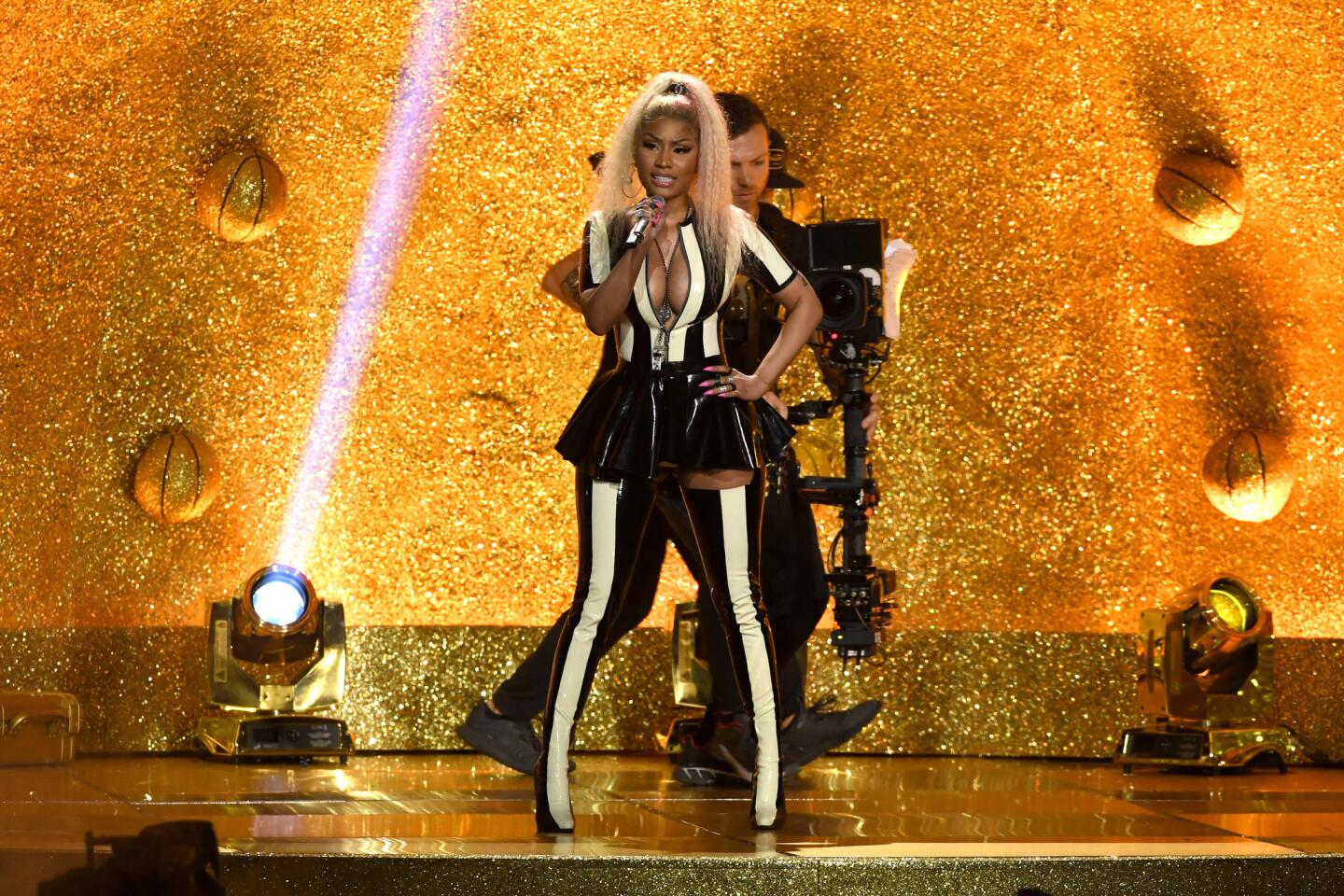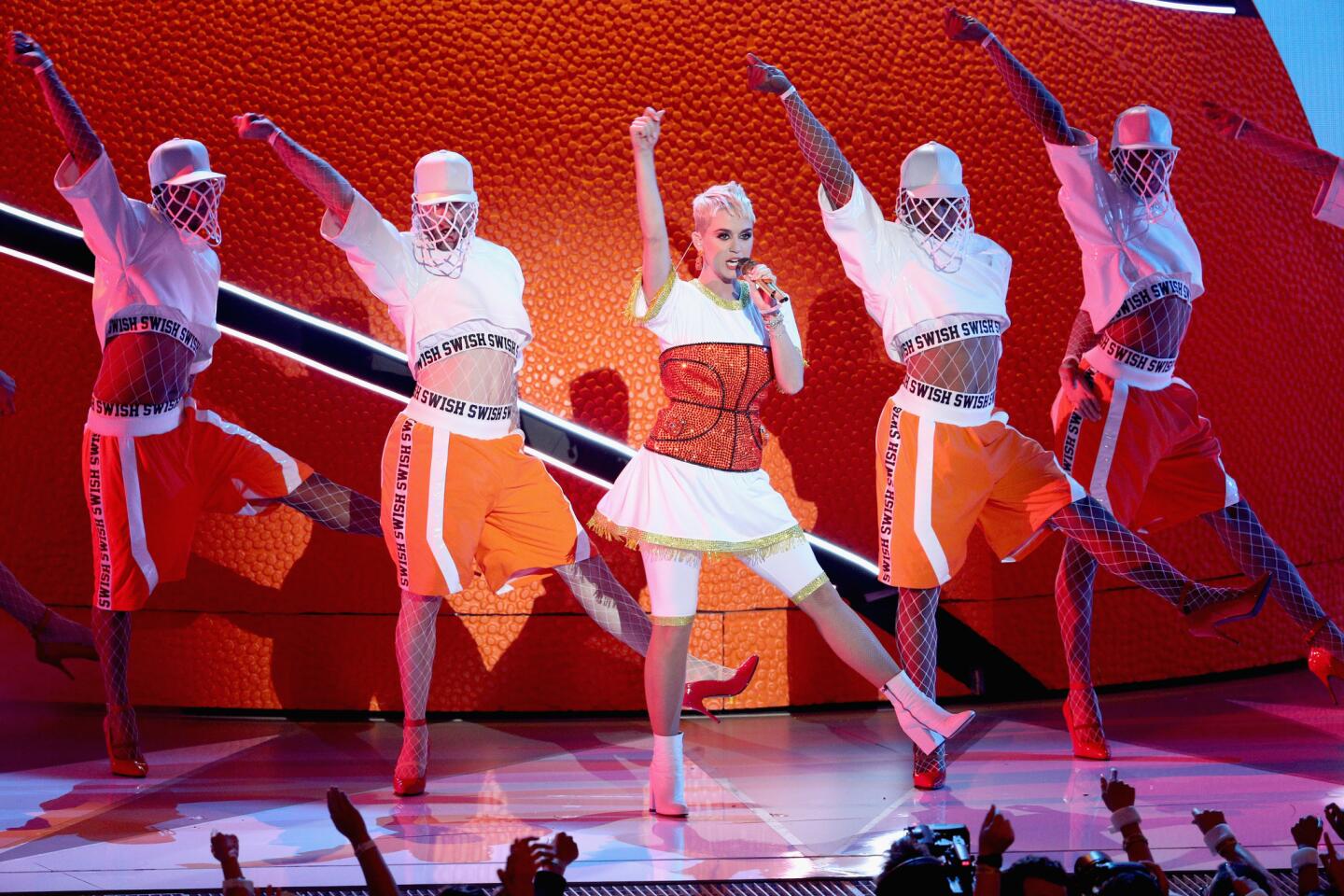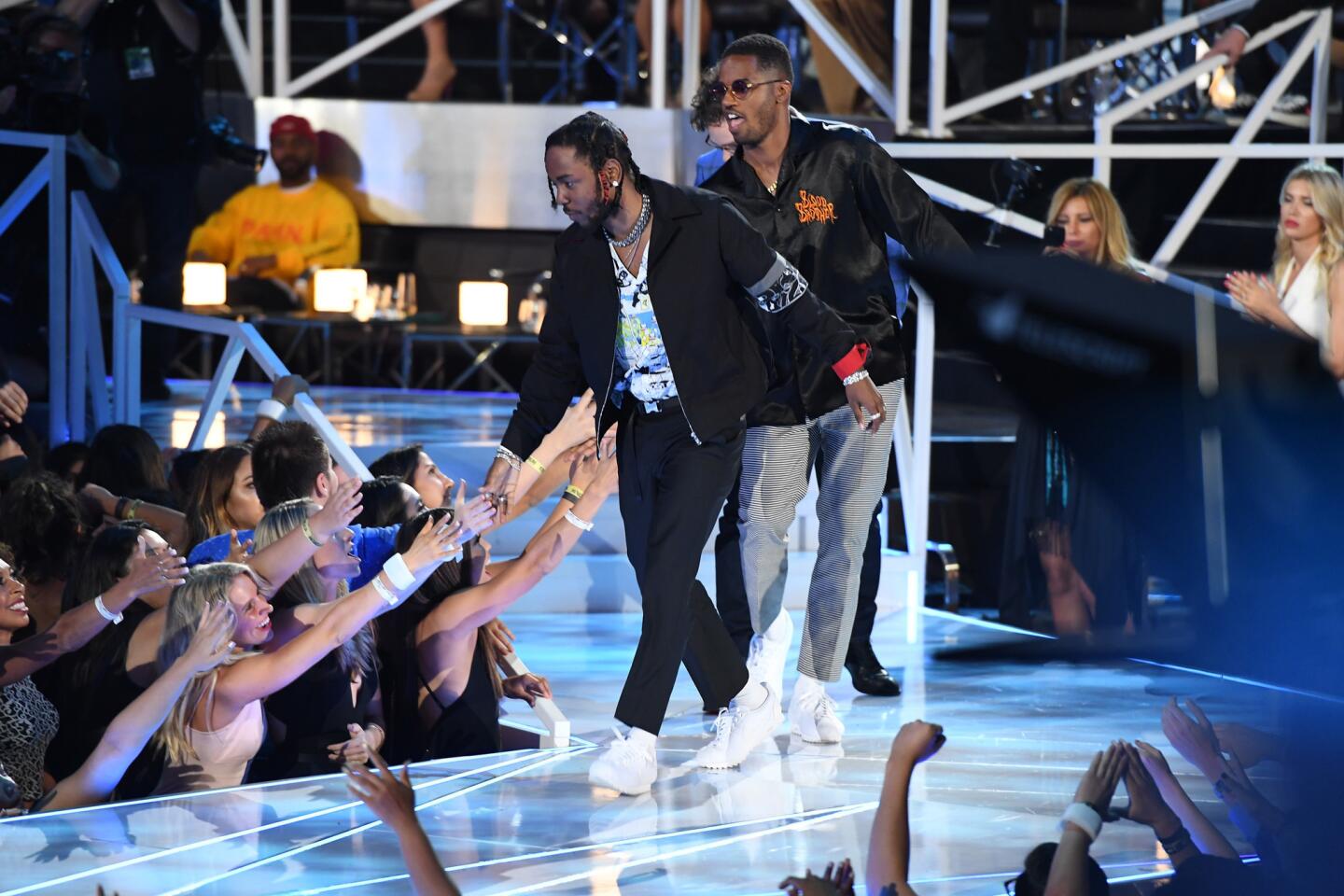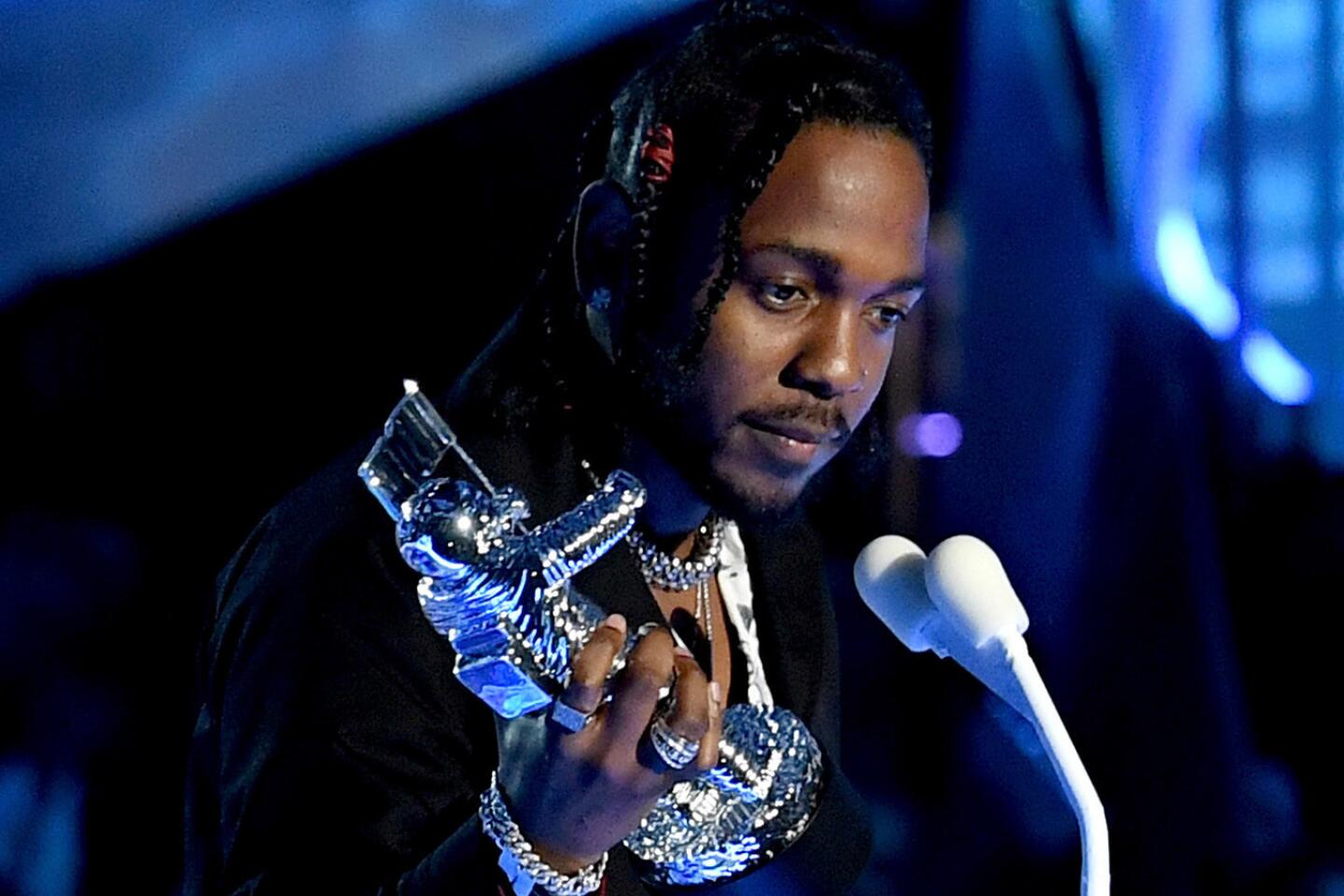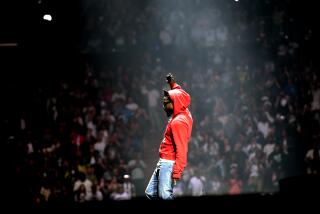Criticâs Notebook: How MTVâs Video Music Awards reflected a troubled moment in America
It wasnât Pink. It wasnât Taylor Swift. It wasnât even Katy Perry, who hosted the show and gave its closing performance.
No, the person MTV clearly wanted to represent the 2017 edition of its annual Video Music Awards â to communicate its heart and soul â was Susan Bro, whose daughter Heather Heyer was killed this month as she protested the white-supremacist rally that erupted into violence in Charlottesville, Va.
Appearing near the end of Sundayâs production, broadcast live from the Forum in Inglewood, Bro was ostensibly at the VMAs to present the trophy for best fight against the system â a new category the network introduced this year to highlight work with a social conscience, including John Legendâs âSurefireâ and âImmigrants (We Get the Job Done)â from âThe Hamilton Mixtape.â
Really, though, Heyerâs mother, who spoke about a new foundation organized to âhelp make Heatherâs death count,â had been enlisted to demonstrate that at a dark moment in American history, MTV stands squarely with those fighting for progressive values â and should no longer be thought of as a place for mere entertainment.
She was even introduced by Robert Lee IV â a descendant of Confederate Gen. Robert E. Lee â who said his ancestor had become an idol of white supremacy and hate. Lee went on to describe racism as Americaâs âoriginal sin.â
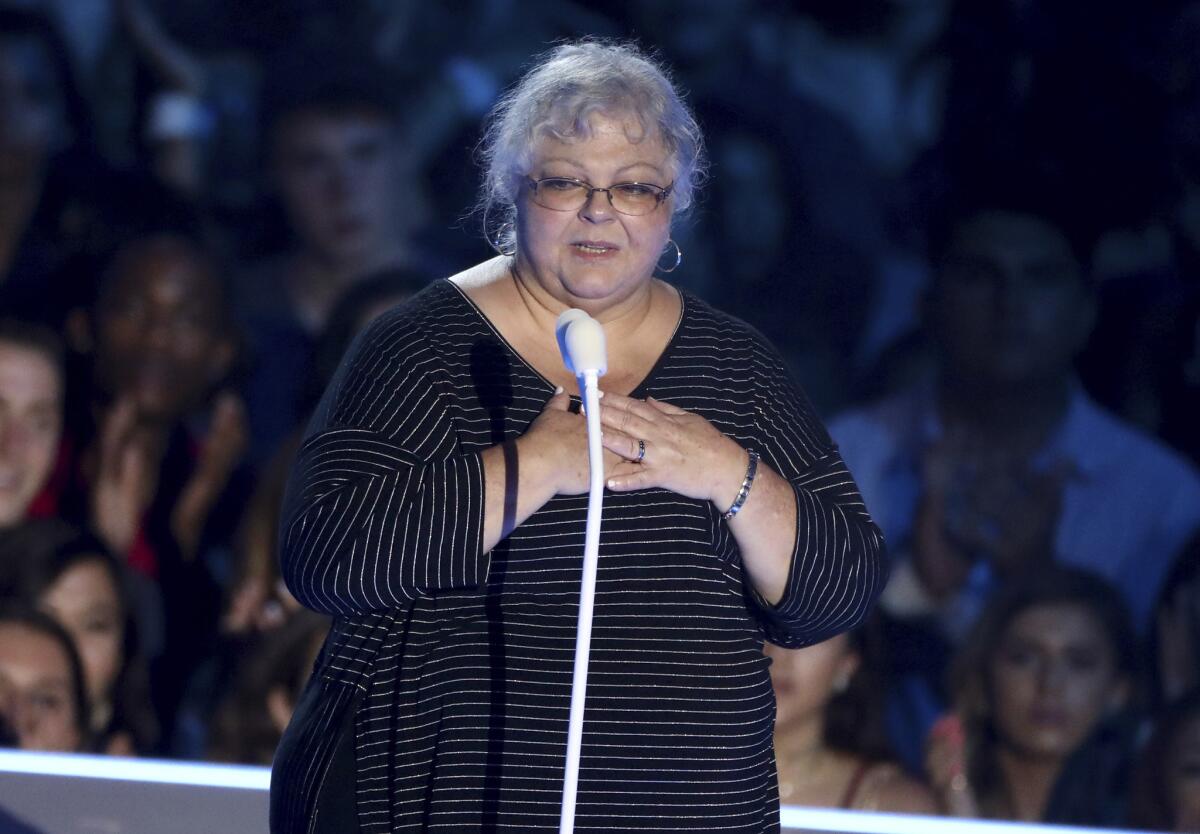
Yet immediately after Broâs speech, the show transitioned to a performance by Rod Stewart, whoâd somehow persuaded the young electro-funk group DNCE (featuring a mustachioed Joe Jonas) to join him for a remake of his disco trifle âDo Ya Think Iâm Sexy.â
Obviously, MTV hasnât abandoned its duty to titillate yet.
Indeed, in the week before the show aired, the network seemed to encourage rumors that the VMAs would offer a dramatic showdown between Perry and Swift, whoâve been locked in a feud for several years that began when ⌠oh, who cares?
In the end, the duel didnât materialize, though Perry did sing her song âSwish Swishâ (widely thought to be about her foe) and the VMAs premiered Swiftâs video for her combative new track, âLook What You Made Me Doâ (albeit without a sign of the singer in the flesh).
Each highlighted the self-awareness thatâs built into the experience of pop stardom in the Internet age â how an artist must now be fluent in the criticisms against him or her and react to them almost instantaneously with humor or sarcasm or, in the case of Swiftâs video, a kind of scorched-earth disgust.
With its zombie imagery and its vivid depiction of Swift chainsawing a wing from a sleek private jet, the âLook What You Made Me Doâ clip was an undeniable thrill. But it was also exhausting; it made you long for a time when pop songs didnât require annotation.
Perhaps thatâs why Pinkâs performance was so restorative.
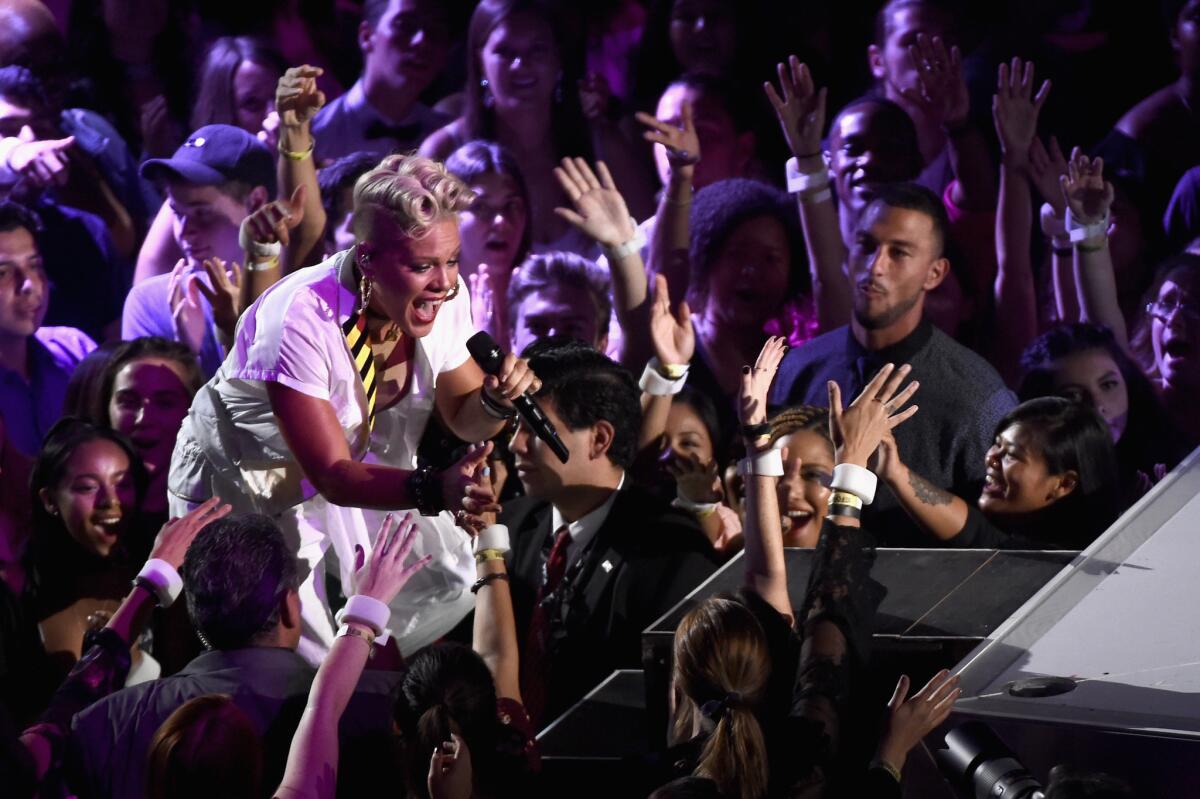
Appearing as this yearâs recipient of the lifetime-achievement Michael Jackson Video Vanguard Award, the singer ran through some of her biggest hits â from âGet the Party Startedâ to the just-released âWhat About Usâ â in a tidy but dense medley that emphasized her powerful voice and her universal themes of love and acceptance.
Not that she was simplistic: Pink spoke movingly in her acceptance speech about her young daughterâs struggle with restrictive beauty standards after she said, âMama, Iâm the ugliest girl I know.â
âI went home and made a PowerPoint presentation for her,â Pink said, âand in that presentation were androgynous rock stars and artists that live their truth, are probably made fun of every day of their lives and carry on and wave their flag, and inspire the rest of us.â
But the plain-spokenness of her display was effective; it felt inclusive in a way that went beyond liberal platitudes.
Other artists aimed for a similarly earnest vibe, from the rapper Logic â who did his suicide-prevention anthem, â1-800-273-8255,â while surrounded by what MTV said were survivors of suicide attempts â to Alessia Cara, the young R&B singer who started her âScars to Your Beautifulâ dressed in a fancy gown before stripping down to a no-frills tank-top and black pants.
And then there was Kendrick Lamar, who opened Sundayâs show and took video of the year with âHumble.â (Other winners included Fifth Harmony for best pop video with âDownâ and Ed Sheeran for artist of the year.)
You wouldnât call Lamarâs performance of two tracks from this yearâs blockbuster âDamnâ album stripped down; among other bits of spectacle, the bit had a dancing ninja covered in flames.
But as Lamar furiously spat out his rhymes â especially in âHumble,â about being âsick and tiredâ of the illusion of digital perfection â you could tell he was aiming to meet the same appetite for substance that Pink was.
MTV was no doubt pleased.
To read the article in Spanish, click here
Twitter: @mikaelwood
ALSO
Is Taylor Swift trying to turn off her listeners?
Kendrick Lamar was a superstar in life size at Staples Center
What Donald Trump had to do with the smash-hit remix of âDespacitoâ
More to Read
The biggest entertainment stories
Get our big stories about Hollywood, film, television, music, arts, culture and more right in your inbox as soon as they publish.
You may occasionally receive promotional content from the Los Angeles Times.
